Quick filters:
Africa 19th century Stock Photos and Images
 Hunting elephants in Central Africa in the late 19th century. Stock Photohttps://www.alamy.com/image-license-details/?v=1https://www.alamy.com/stock-photo-hunting-elephants-in-central-africa-in-the-late-19th-century-29722518.html
Hunting elephants in Central Africa in the late 19th century. Stock Photohttps://www.alamy.com/image-license-details/?v=1https://www.alamy.com/stock-photo-hunting-elephants-in-central-africa-in-the-late-19th-century-29722518.htmlRMBM9YAE–Hunting elephants in Central Africa in the late 19th century.
 History of Africa. 19th century. The fleet of the international expedition at Banana Point, near the Dutch factory. Engraving. El Congo y la Creación del Estado Independiente de este nombre. Historia de los Trabajos y Exploraciones Verificados (The Congo and the Founding of its Free State. A Story of Work and Exploration), by Henry M. Stanley. Edited in Barcelona, ca. 1890. Spain. Stock Photohttps://www.alamy.com/image-license-details/?v=1https://www.alamy.com/history-of-africa-19th-century-the-fleet-of-the-international-expedition-at-banana-point-near-the-dutch-factory-engraving-el-congo-y-la-creacin-del-estado-independiente-de-este-nombre-historia-de-los-trabajos-y-exploraciones-verificados-the-congo-and-the-founding-of-its-free-state-a-story-of-work-and-exploration-by-henry-m-stanley-edited-in-barcelona-ca-1890-spain-image425239918.html
History of Africa. 19th century. The fleet of the international expedition at Banana Point, near the Dutch factory. Engraving. El Congo y la Creación del Estado Independiente de este nombre. Historia de los Trabajos y Exploraciones Verificados (The Congo and the Founding of its Free State. A Story of Work and Exploration), by Henry M. Stanley. Edited in Barcelona, ca. 1890. Spain. Stock Photohttps://www.alamy.com/image-license-details/?v=1https://www.alamy.com/history-of-africa-19th-century-the-fleet-of-the-international-expedition-at-banana-point-near-the-dutch-factory-engraving-el-congo-y-la-creacin-del-estado-independiente-de-este-nombre-historia-de-los-trabajos-y-exploraciones-verificados-the-congo-and-the-founding-of-its-free-state-a-story-of-work-and-exploration-by-henry-m-stanley-edited-in-barcelona-ca-1890-spain-image425239918.htmlRM2FKR9RX–History of Africa. 19th century. The fleet of the international expedition at Banana Point, near the Dutch factory. Engraving. El Congo y la Creación del Estado Independiente de este nombre. Historia de los Trabajos y Exploraciones Verificados (The Congo and the Founding of its Free State. A Story of Work and Exploration), by Henry M. Stanley. Edited in Barcelona, ca. 1890. Spain.
 Map Africa, 19th century engraving. Reimagined by Gibon. Classic art with a modern twist reimagined Stock Photohttps://www.alamy.com/image-license-details/?v=1https://www.alamy.com/map-africa-19th-century-engraving-reimagined-by-gibon-classic-art-with-a-modern-twist-reimagined-image230058056.html
Map Africa, 19th century engraving. Reimagined by Gibon. Classic art with a modern twist reimagined Stock Photohttps://www.alamy.com/image-license-details/?v=1https://www.alamy.com/map-africa-19th-century-engraving-reimagined-by-gibon-classic-art-with-a-modern-twist-reimagined-image230058056.htmlRFRA81B4–Map Africa, 19th century engraving. Reimagined by Gibon. Classic art with a modern twist reimagined
 GIBRALTAR AND AFRICA, 19th century engraving Stock Photohttps://www.alamy.com/image-license-details/?v=1https://www.alamy.com/gibraltar-and-africa-19th-century-engraving-image60119665.html
GIBRALTAR AND AFRICA, 19th century engraving Stock Photohttps://www.alamy.com/image-license-details/?v=1https://www.alamy.com/gibraltar-and-africa-19th-century-engraving-image60119665.htmlRMDDPK6W–GIBRALTAR AND AFRICA, 19th century engraving
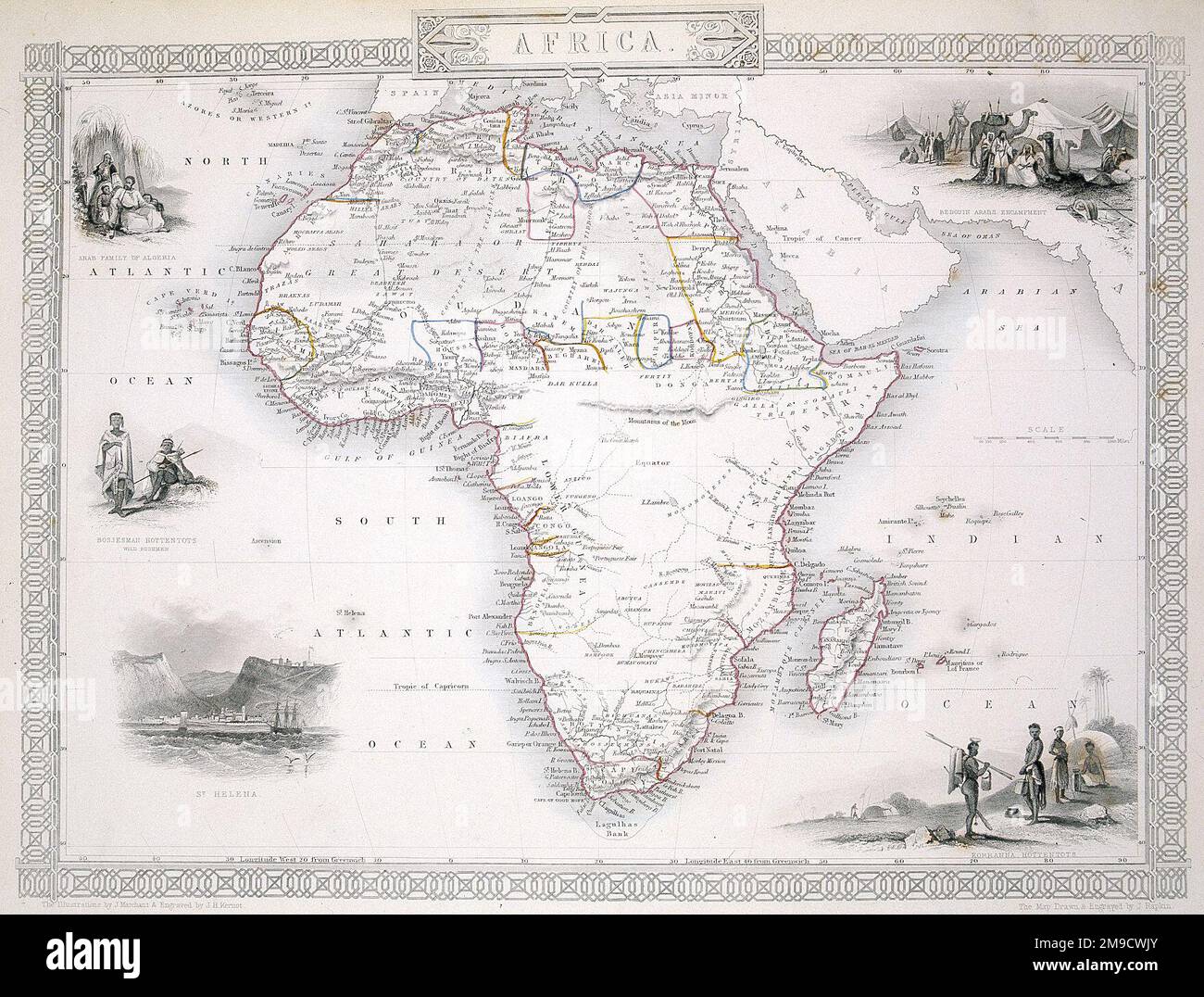 19th century Map of Africa Stock Photohttps://www.alamy.com/image-license-details/?v=1https://www.alamy.com/19th-century-map-of-africa-image504916131.html
19th century Map of Africa Stock Photohttps://www.alamy.com/image-license-details/?v=1https://www.alamy.com/19th-century-map-of-africa-image504916131.htmlRM2M9CWJY–19th century Map of Africa
 Natives in front of the hut of a village elder in German East Africa. Front right presumably: Carl Peters. The photo is undated. Stock Photohttps://www.alamy.com/image-license-details/?v=1https://www.alamy.com/natives-in-front-of-the-hut-of-a-village-elder-in-german-east-africa-front-right-presumably-carl-peters-the-photo-is-undated-image345688652.html
Natives in front of the hut of a village elder in German East Africa. Front right presumably: Carl Peters. The photo is undated. Stock Photohttps://www.alamy.com/image-license-details/?v=1https://www.alamy.com/natives-in-front-of-the-hut-of-a-village-elder-in-german-east-africa-front-right-presumably-carl-peters-the-photo-is-undated-image345688652.htmlRM2B2BDB8–Natives in front of the hut of a village elder in German East Africa. Front right presumably: Carl Peters. The photo is undated.
 Archispirostreptus gigas, African Giant Black Millipede, one of the largest millipedes. Africa. Dated 1855 Stock Photohttps://www.alamy.com/image-license-details/?v=1https://www.alamy.com/stock-photo-archispirostreptus-gigas-african-giant-black-millipede-one-of-the-90827783.html
Archispirostreptus gigas, African Giant Black Millipede, one of the largest millipedes. Africa. Dated 1855 Stock Photohttps://www.alamy.com/image-license-details/?v=1https://www.alamy.com/stock-photo-archispirostreptus-gigas-african-giant-black-millipede-one-of-the-90827783.htmlRMF7NFNB–Archispirostreptus gigas, African Giant Black Millipede, one of the largest millipedes. Africa. Dated 1855
 The meeting between Henry Morton Stanley and Dr David Livingstone, Africa, 19th century. Artist: Unknown Stock Photohttps://www.alamy.com/image-license-details/?v=1https://www.alamy.com/the-meeting-between-henry-morton-stanley-and-dr-david-livingstone-africa-19th-century-artist-unknown-image262757626.html
The meeting between Henry Morton Stanley and Dr David Livingstone, Africa, 19th century. Artist: Unknown Stock Photohttps://www.alamy.com/image-license-details/?v=1https://www.alamy.com/the-meeting-between-henry-morton-stanley-and-dr-david-livingstone-africa-19th-century-artist-unknown-image262757626.htmlRMW7DJ0X–The meeting between Henry Morton Stanley and Dr David Livingstone, Africa, 19th century. Artist: Unknown
 Archispirostreptus gigas, African Giant Black Millipede, one of the largest millipedes. Africa. Dated 1855 Stock Photohttps://www.alamy.com/image-license-details/?v=1https://www.alamy.com/archispirostreptus-gigas-african-giant-black-millipede-one-of-the-largest-millipedes-africa-dated-1855-image257288313.html
Archispirostreptus gigas, African Giant Black Millipede, one of the largest millipedes. Africa. Dated 1855 Stock Photohttps://www.alamy.com/image-license-details/?v=1https://www.alamy.com/archispirostreptus-gigas-african-giant-black-millipede-one-of-the-largest-millipedes-africa-dated-1855-image257288313.htmlRMTXGDT9–Archispirostreptus gigas, African Giant Black Millipede, one of the largest millipedes. Africa. Dated 1855
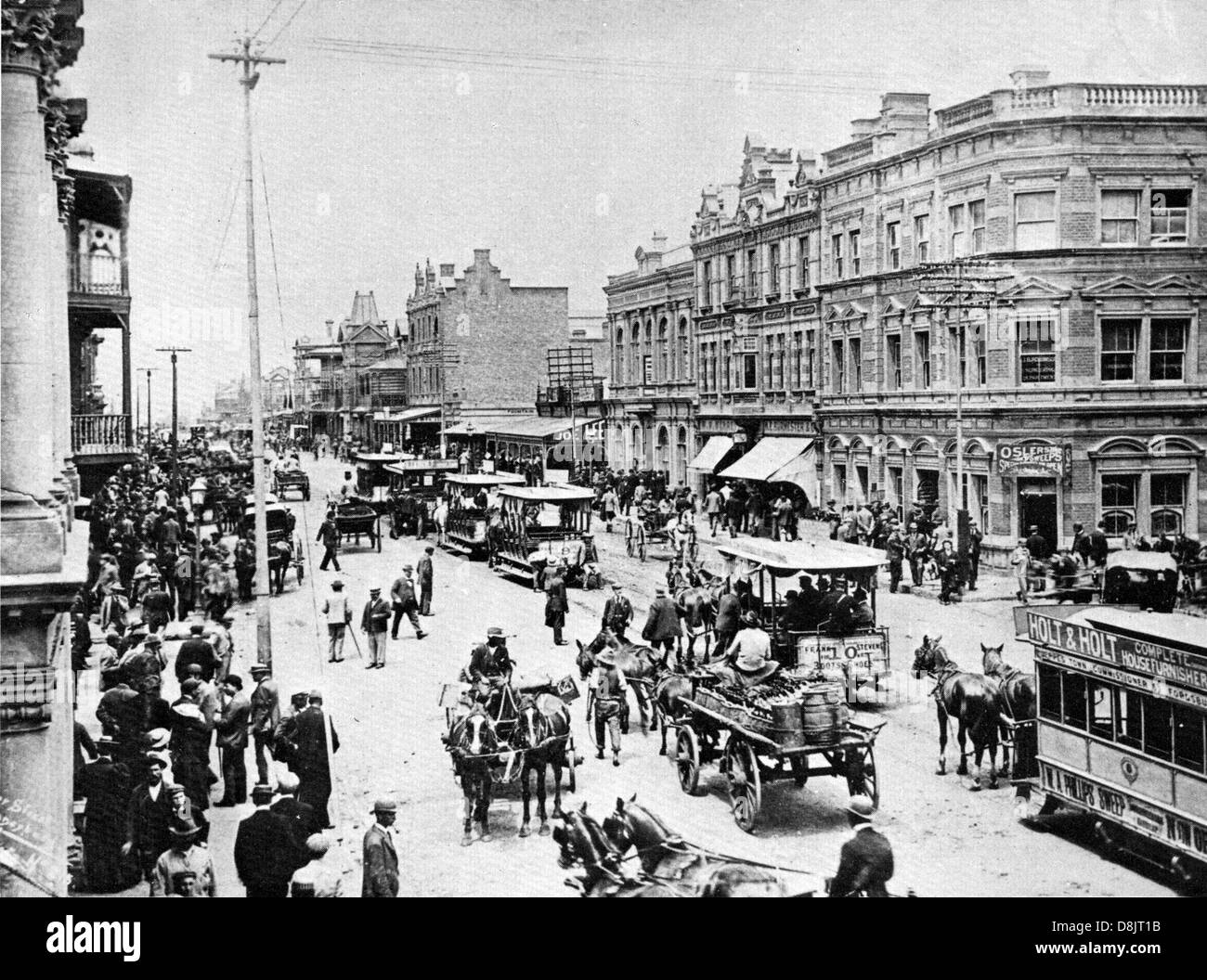 CAPE TOWN, South Africa, about 1870 Stock Photohttps://www.alamy.com/image-license-details/?v=1https://www.alamy.com/stock-photo-cape-town-south-africa-about-1870-56962343.html
CAPE TOWN, South Africa, about 1870 Stock Photohttps://www.alamy.com/image-license-details/?v=1https://www.alamy.com/stock-photo-cape-town-south-africa-about-1870-56962343.htmlRMD8JT1B–CAPE TOWN, South Africa, about 1870
 Engraving of Crocodiles resting on a river bank, africa, 19th Century Stock Photohttps://www.alamy.com/image-license-details/?v=1https://www.alamy.com/engraving-of-crocodiles-resting-on-a-river-bank-africa-19th-century-image178070225.html
Engraving of Crocodiles resting on a river bank, africa, 19th Century Stock Photohttps://www.alamy.com/image-license-details/?v=1https://www.alamy.com/engraving-of-crocodiles-resting-on-a-river-bank-africa-19th-century-image178070225.htmlRMM9KPAW–Engraving of Crocodiles resting on a river bank, africa, 19th Century
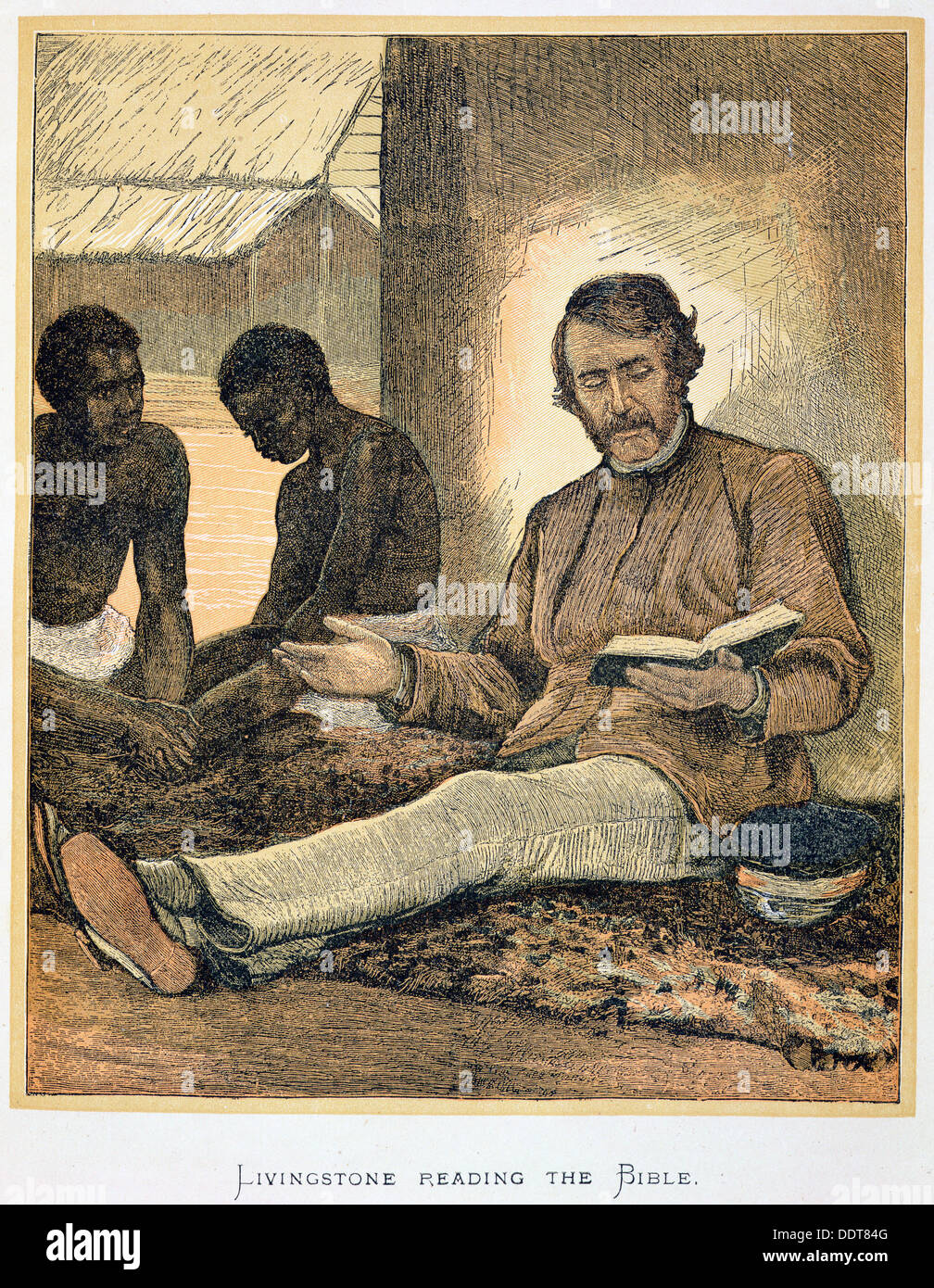 David Livingstone reading the Bible, Africa, 19th century. Artist: Unknown Stock Photohttps://www.alamy.com/image-license-details/?v=1https://www.alamy.com/david-livingstone-reading-the-bible-africa-19th-century-artist-unknown-image60154880.html
David Livingstone reading the Bible, Africa, 19th century. Artist: Unknown Stock Photohttps://www.alamy.com/image-license-details/?v=1https://www.alamy.com/david-livingstone-reading-the-bible-africa-19th-century-artist-unknown-image60154880.htmlRMDDT84G–David Livingstone reading the Bible, Africa, 19th century. Artist: Unknown
 Spearhead steel weapon. Africa 19th century Stock Photohttps://www.alamy.com/image-license-details/?v=1https://www.alamy.com/spearhead-steel-weapon-africa-19th-century-image552500170.html
Spearhead steel weapon. Africa 19th century Stock Photohttps://www.alamy.com/image-license-details/?v=1https://www.alamy.com/spearhead-steel-weapon-africa-19th-century-image552500170.htmlRM2R2TFGX–Spearhead steel weapon. Africa 19th century
 Woman of the San people (Bushman), South Africa, 19th century. Stock Photohttps://www.alamy.com/image-license-details/?v=1https://www.alamy.com/stock-photo-woman-of-the-san-people-bushman-south-africa-19th-century-72553814.html
Woman of the San people (Bushman), South Africa, 19th century. Stock Photohttps://www.alamy.com/image-license-details/?v=1https://www.alamy.com/stock-photo-woman-of-the-san-people-bushman-south-africa-19th-century-72553814.htmlRME6133J–Woman of the San people (Bushman), South Africa, 19th century.
 Ethiopian cavalryman in the late 19th century. Stock Photohttps://www.alamy.com/image-license-details/?v=1https://www.alamy.com/ethiopian-cavalryman-in-the-late-19th-century-image398083926.html
Ethiopian cavalryman in the late 19th century. Stock Photohttps://www.alamy.com/image-license-details/?v=1https://www.alamy.com/ethiopian-cavalryman-in-the-late-19th-century-image398083926.htmlRM2E3J832–Ethiopian cavalryman in the late 19th century.
 Funeral in Algeria, Maghreb region, North Africa, 19th century Stock Photohttps://www.alamy.com/image-license-details/?v=1https://www.alamy.com/funeral-in-algeria-maghreb-region-north-africa-19th-century-image343542042.html
Funeral in Algeria, Maghreb region, North Africa, 19th century Stock Photohttps://www.alamy.com/image-license-details/?v=1https://www.alamy.com/funeral-in-algeria-maghreb-region-north-africa-19th-century-image343542042.htmlRM2AXWKAJ–Funeral in Algeria, Maghreb region, North Africa, 19th century
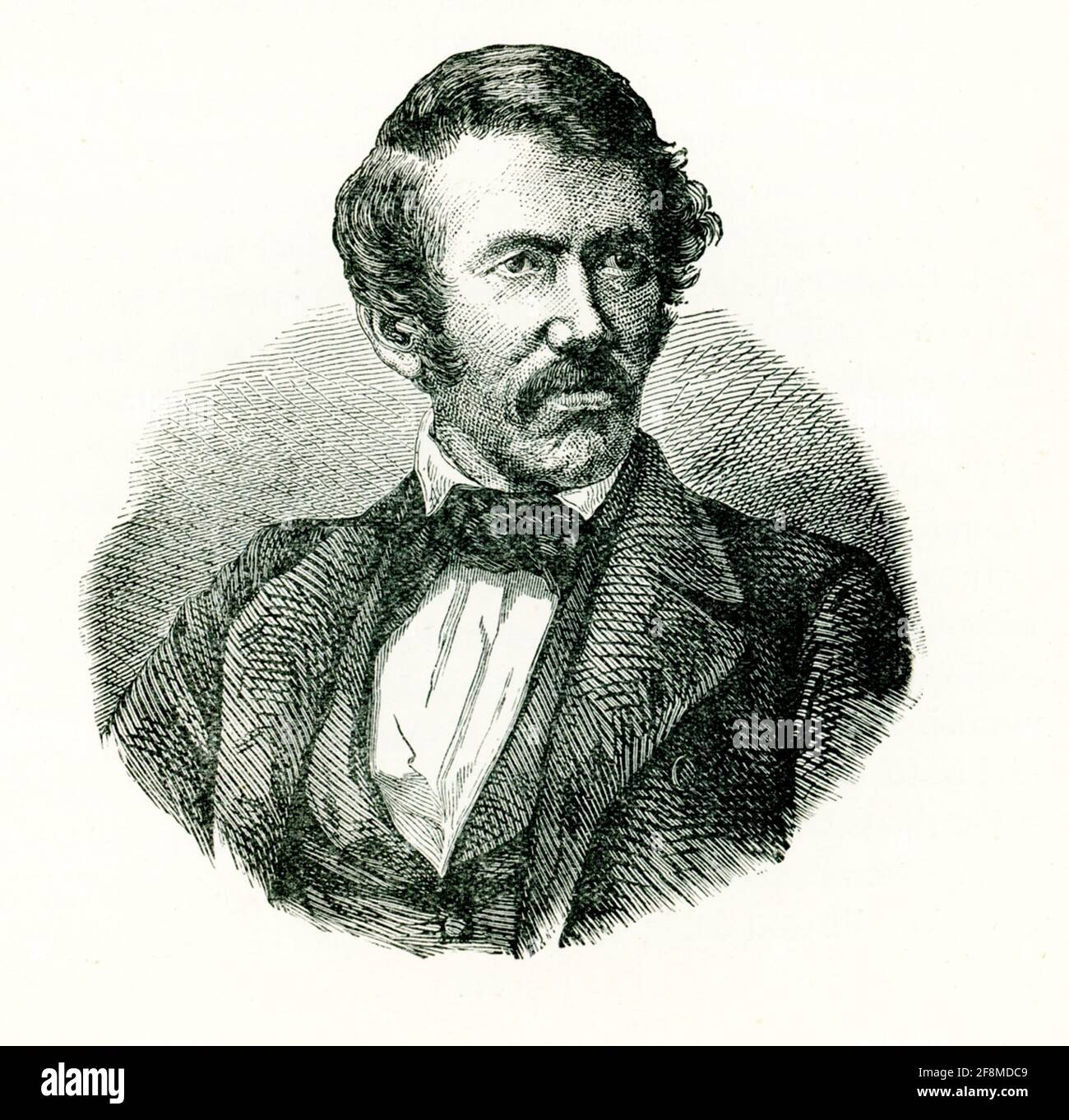 David Livingstone (1813-1873) was a Scottish missionary and explorer in Africa. He discovered Victoria Falls in 1855. When there was no news from him for some time, British explorer Henry Morton Stanley was sent to find him. He did so on November 10, 1871, at the small village of Ujiji near Tanganyika. Stock Photohttps://www.alamy.com/image-license-details/?v=1https://www.alamy.com/david-livingstone-1813-1873-was-a-scottish-missionary-and-explorer-in-africa-he-discovered-victoria-falls-in-1855-when-there-was-no-news-from-him-for-some-time-british-explorer-henry-morton-stanley-was-sent-to-find-him-he-did-so-on-november-10-1871-at-the-small-village-of-ujiji-near-tanganyika-image418415657.html
David Livingstone (1813-1873) was a Scottish missionary and explorer in Africa. He discovered Victoria Falls in 1855. When there was no news from him for some time, British explorer Henry Morton Stanley was sent to find him. He did so on November 10, 1871, at the small village of Ujiji near Tanganyika. Stock Photohttps://www.alamy.com/image-license-details/?v=1https://www.alamy.com/david-livingstone-1813-1873-was-a-scottish-missionary-and-explorer-in-africa-he-discovered-victoria-falls-in-1855-when-there-was-no-news-from-him-for-some-time-british-explorer-henry-morton-stanley-was-sent-to-find-him-he-did-so-on-november-10-1871-at-the-small-village-of-ujiji-near-tanganyika-image418415657.htmlRF2F8MDC9–David Livingstone (1813-1873) was a Scottish missionary and explorer in Africa. He discovered Victoria Falls in 1855. When there was no news from him for some time, British explorer Henry Morton Stanley was sent to find him. He did so on November 10, 1871, at the small village of Ujiji near Tanganyika.
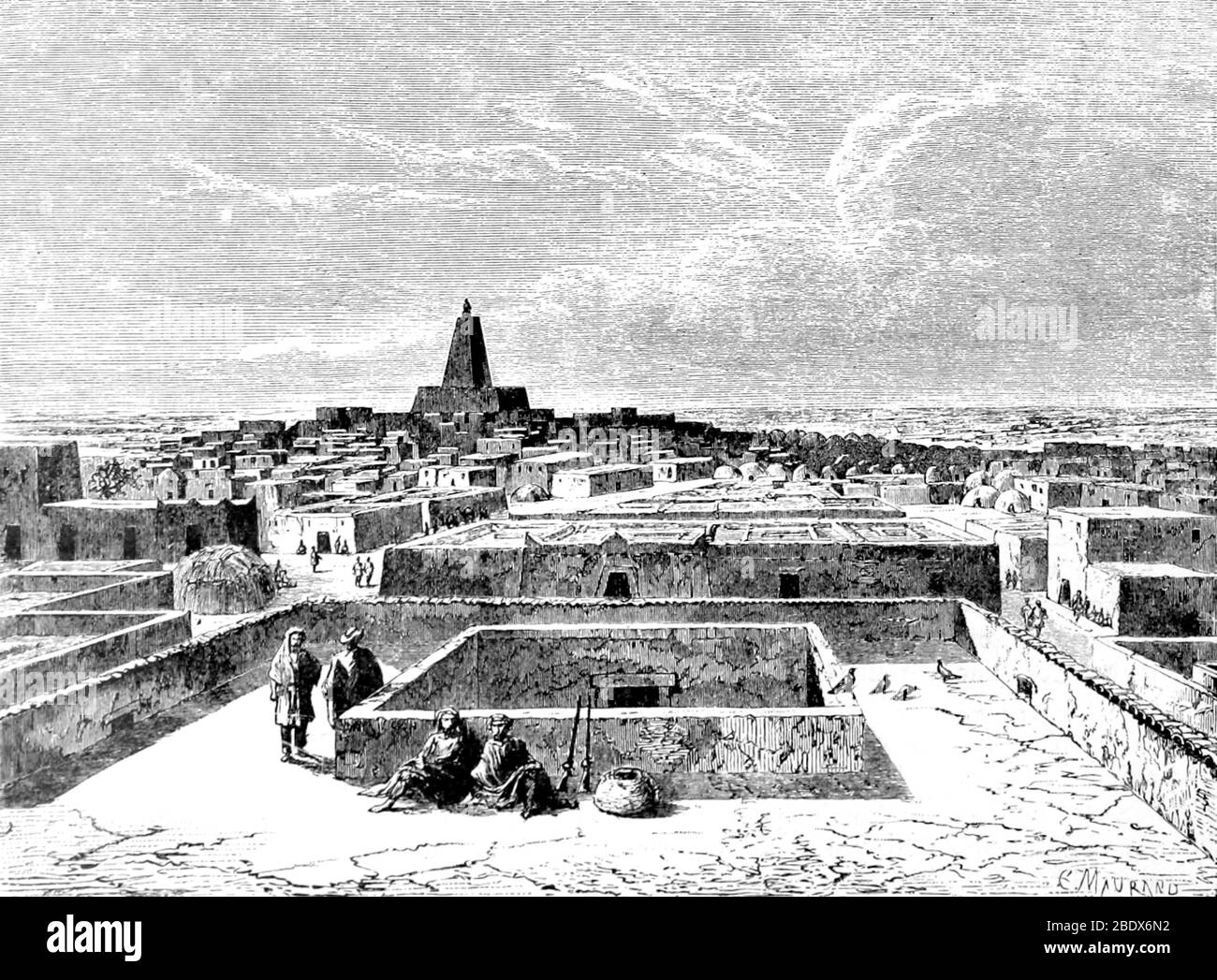 West Africa, Timbuktu. 19th Century Stock Photohttps://www.alamy.com/image-license-details/?v=1https://www.alamy.com/west-africa-timbuktu-19th-century-image352773934.html
West Africa, Timbuktu. 19th Century Stock Photohttps://www.alamy.com/image-license-details/?v=1https://www.alamy.com/west-africa-timbuktu-19th-century-image352773934.htmlRM2BDX6N2–West Africa, Timbuktu. 19th Century
 bakalai woman children Africa Gabon Gaboon Djembe Omboue rush reed hut house home wood thatch sit sat pose native tribe female Stock Photohttps://www.alamy.com/image-license-details/?v=1https://www.alamy.com/stock-photo-bakalai-woman-children-africa-gabon-gaboon-djembe-omboue-rush-reed-10073477.html
bakalai woman children Africa Gabon Gaboon Djembe Omboue rush reed hut house home wood thatch sit sat pose native tribe female Stock Photohttps://www.alamy.com/image-license-details/?v=1https://www.alamy.com/stock-photo-bakalai-woman-children-africa-gabon-gaboon-djembe-omboue-rush-reed-10073477.htmlRMA0WB7J–bakalai woman children Africa Gabon Gaboon Djembe Omboue rush reed hut house home wood thatch sit sat pose native tribe female
 Hippopotamus hunting in Africa in the 19th century. Stock Photohttps://www.alamy.com/image-license-details/?v=1https://www.alamy.com/stock-photo-hippopotamus-hunting-in-africa-in-the-19th-century-36027171.html
Hippopotamus hunting in Africa in the 19th century. Stock Photohttps://www.alamy.com/image-license-details/?v=1https://www.alamy.com/stock-photo-hippopotamus-hunting-in-africa-in-the-19th-century-36027171.htmlRMC2H50K–Hippopotamus hunting in Africa in the 19th century.
 History of Africa. 19th century. Chieftain of Kimpoko (on the northeast shore of the Stanley Pool). Engraving. El Congo y la Creación del Estado Independiente de este nombre. Historia de los Trabajos y Exploraciones Verificados (The Congo and the Founding of its Free State. A Story of Work and Exploration), by Henry M. Stanley. Edited in Barcelona, ca. 1890. Spain. Stock Photohttps://www.alamy.com/image-license-details/?v=1https://www.alamy.com/history-of-africa-19th-century-chieftain-of-kimpoko-on-the-northeast-shore-of-the-stanley-pool-engraving-el-congo-y-la-creacin-del-estado-independiente-de-este-nombre-historia-de-los-trabajos-y-exploraciones-verificados-the-congo-and-the-founding-of-its-free-state-a-story-of-work-and-exploration-by-henry-m-stanley-edited-in-barcelona-ca-1890-spain-image425493684.html
History of Africa. 19th century. Chieftain of Kimpoko (on the northeast shore of the Stanley Pool). Engraving. El Congo y la Creación del Estado Independiente de este nombre. Historia de los Trabajos y Exploraciones Verificados (The Congo and the Founding of its Free State. A Story of Work and Exploration), by Henry M. Stanley. Edited in Barcelona, ca. 1890. Spain. Stock Photohttps://www.alamy.com/image-license-details/?v=1https://www.alamy.com/history-of-africa-19th-century-chieftain-of-kimpoko-on-the-northeast-shore-of-the-stanley-pool-engraving-el-congo-y-la-creacin-del-estado-independiente-de-este-nombre-historia-de-los-trabajos-y-exploraciones-verificados-the-congo-and-the-founding-of-its-free-state-a-story-of-work-and-exploration-by-henry-m-stanley-edited-in-barcelona-ca-1890-spain-image425493684.htmlRM2FM6WF0–History of Africa. 19th century. Chieftain of Kimpoko (on the northeast shore of the Stanley Pool). Engraving. El Congo y la Creación del Estado Independiente de este nombre. Historia de los Trabajos y Exploraciones Verificados (The Congo and the Founding of its Free State. A Story of Work and Exploration), by Henry M. Stanley. Edited in Barcelona, ca. 1890. Spain.
 Inspired by Vue de la Rapide de la Premiere Cataracte, Antonio Beato, Italian and British, ca. 1825-ca.1903, Albumen silver photograph, Africa, 19th century, image/sheet: 7 15/16 x 10 3/16 in., 20.1 x 25.8 cm, 19th Century, Albumen Silver Photograph, Antonio Beato, Black and White, Cataract, Egypt, Reimagined by Artotop. Classic art reinvented with a modern twist. Design of warm cheerful glowing of brightness and light ray radiance. Photography inspired by surrealism and futurism, embracing dynamic energy of modern technology, movement, speed and revolutionize culture Stock Photohttps://www.alamy.com/image-license-details/?v=1https://www.alamy.com/inspired-by-vue-de-la-rapide-de-la-premiere-cataracte-antonio-beato-italian-and-british-ca-1825-ca1903-albumen-silver-photograph-africa-19th-century-imagesheet-7-1516-x-10-316-in-201-x-258-cm-19th-century-albumen-silver-photograph-antonio-beato-black-and-white-cataract-egypt-reimagined-by-artotop-classic-art-reinvented-with-a-modern-twist-design-of-warm-cheerful-glowing-of-brightness-and-light-ray-radiance-photography-inspired-by-surrealism-and-futurism-embracing-dynamic-energy-of-modern-technology-movement-speed-and-revolutionize-culture-image459262978.html
Inspired by Vue de la Rapide de la Premiere Cataracte, Antonio Beato, Italian and British, ca. 1825-ca.1903, Albumen silver photograph, Africa, 19th century, image/sheet: 7 15/16 x 10 3/16 in., 20.1 x 25.8 cm, 19th Century, Albumen Silver Photograph, Antonio Beato, Black and White, Cataract, Egypt, Reimagined by Artotop. Classic art reinvented with a modern twist. Design of warm cheerful glowing of brightness and light ray radiance. Photography inspired by surrealism and futurism, embracing dynamic energy of modern technology, movement, speed and revolutionize culture Stock Photohttps://www.alamy.com/image-license-details/?v=1https://www.alamy.com/inspired-by-vue-de-la-rapide-de-la-premiere-cataracte-antonio-beato-italian-and-british-ca-1825-ca1903-albumen-silver-photograph-africa-19th-century-imagesheet-7-1516-x-10-316-in-201-x-258-cm-19th-century-albumen-silver-photograph-antonio-beato-black-and-white-cataract-egypt-reimagined-by-artotop-classic-art-reinvented-with-a-modern-twist-design-of-warm-cheerful-glowing-of-brightness-and-light-ray-radiance-photography-inspired-by-surrealism-and-futurism-embracing-dynamic-energy-of-modern-technology-movement-speed-and-revolutionize-culture-image459262978.htmlRF2HK56H6–Inspired by Vue de la Rapide de la Premiere Cataracte, Antonio Beato, Italian and British, ca. 1825-ca.1903, Albumen silver photograph, Africa, 19th century, image/sheet: 7 15/16 x 10 3/16 in., 20.1 x 25.8 cm, 19th Century, Albumen Silver Photograph, Antonio Beato, Black and White, Cataract, Egypt, Reimagined by Artotop. Classic art reinvented with a modern twist. Design of warm cheerful glowing of brightness and light ray radiance. Photography inspired by surrealism and futurism, embracing dynamic energy of modern technology, movement, speed and revolutionize culture
 Travels in South Africa, 19th century engraving, Kurreechane, Meribohwhey, 1822 Stock Photohttps://www.alamy.com/image-license-details/?v=1https://www.alamy.com/stock-photo-travels-in-south-africa-19th-century-engraving-kurreechane-meribohwhey-77457990.html
Travels in South Africa, 19th century engraving, Kurreechane, Meribohwhey, 1822 Stock Photohttps://www.alamy.com/image-license-details/?v=1https://www.alamy.com/stock-photo-travels-in-south-africa-19th-century-engraving-kurreechane-meribohwhey-77457990.htmlRMEE0ECP–Travels in South Africa, 19th century engraving, Kurreechane, Meribohwhey, 1822
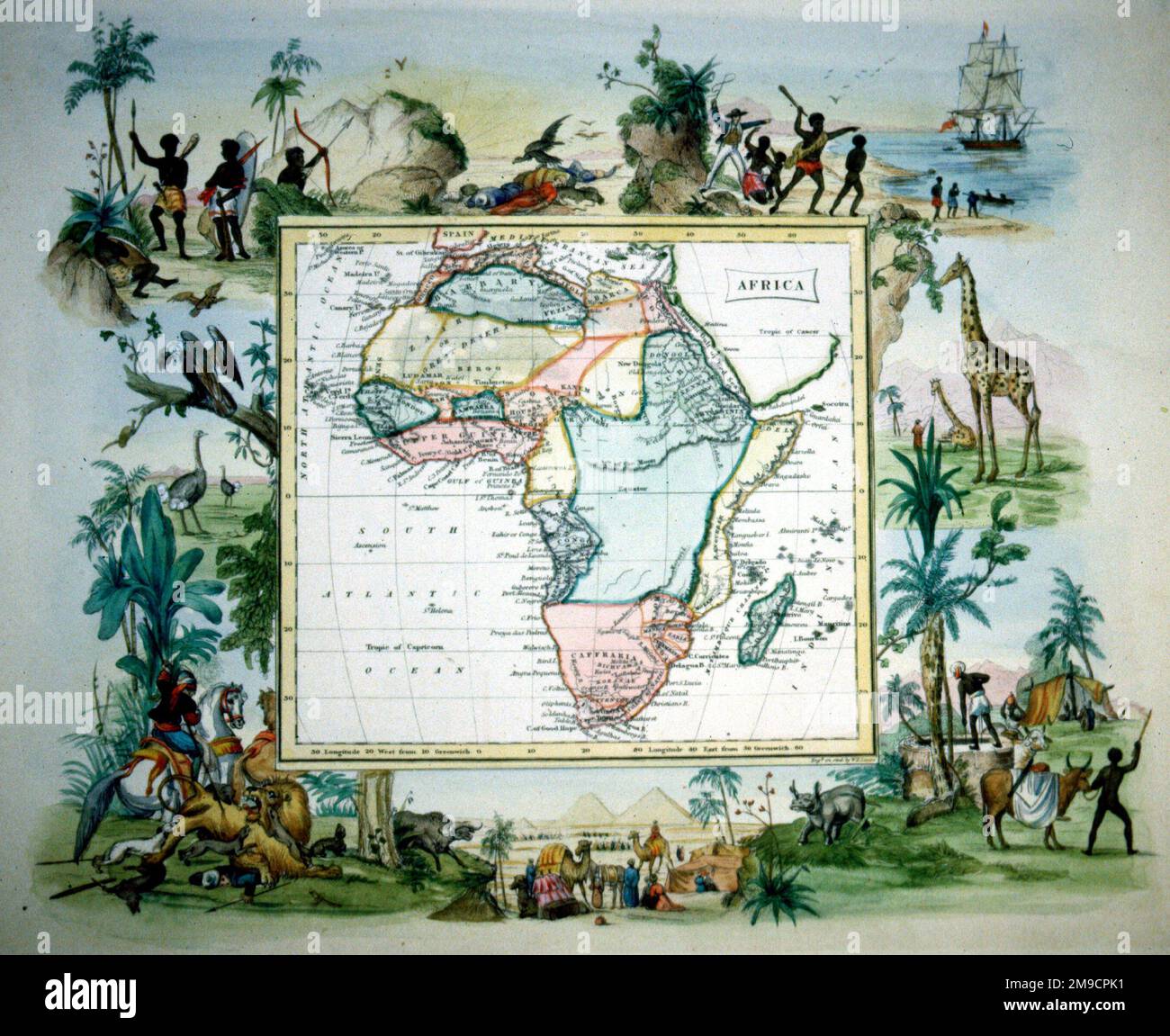 19th century Map of Africa Stock Photohttps://www.alamy.com/image-license-details/?v=1https://www.alamy.com/19th-century-map-of-africa-image504913781.html
19th century Map of Africa Stock Photohttps://www.alamy.com/image-license-details/?v=1https://www.alamy.com/19th-century-map-of-africa-image504913781.htmlRM2M9CPK1–19th century Map of Africa
 Right Hon. Sir Henry Bartle Edward Frere. Stock Photohttps://www.alamy.com/image-license-details/?v=1https://www.alamy.com/stock-photo-right-hon-sir-henry-bartle-edward-frere-91705304.html
Right Hon. Sir Henry Bartle Edward Frere. Stock Photohttps://www.alamy.com/image-license-details/?v=1https://www.alamy.com/stock-photo-right-hon-sir-henry-bartle-edward-frere-91705304.htmlRMF95F1C–Right Hon. Sir Henry Bartle Edward Frere.
 Initiation mask from the Nzambo tribe in the Lower Congo Region in Angola, Africa. 19th Century Stock Photohttps://www.alamy.com/image-license-details/?v=1https://www.alamy.com/stock-photo-initiation-mask-from-the-nzambo-tribe-in-the-lower-congo-region-in-57357506.html
Initiation mask from the Nzambo tribe in the Lower Congo Region in Angola, Africa. 19th Century Stock Photohttps://www.alamy.com/image-license-details/?v=1https://www.alamy.com/stock-photo-initiation-mask-from-the-nzambo-tribe-in-the-lower-congo-region-in-57357506.htmlRMD98T2A–Initiation mask from the Nzambo tribe in the Lower Congo Region in Angola, Africa. 19th Century
 Village, Gabon, 19th century.Artist: E Therond Stock Photohttps://www.alamy.com/image-license-details/?v=1https://www.alamy.com/stock-photo-village-gabon-19th-centuryartist-e-therond-17634447.html
Village, Gabon, 19th century.Artist: E Therond Stock Photohttps://www.alamy.com/image-license-details/?v=1https://www.alamy.com/stock-photo-village-gabon-19th-centuryartist-e-therond-17634447.htmlRMB0K8WK–Village, Gabon, 19th century.Artist: E Therond
 Sir Henry Morton Stanley (1841 – 1904); explorer famous for his exploration of central Africa. Stanley and Kalulu. Ndugu M’Hali or Kalulu (ca. 1865 – 28 March 1877) was an African personal servant and adopted child of the explorer and journalist Henry Morton Stanley Stock Photohttps://www.alamy.com/image-license-details/?v=1https://www.alamy.com/sir-henry-morton-stanley-1841-1904-explorer-famous-for-his-exploration-of-central-africa-stanley-and-kalulu-ndugu-mhali-or-kalulu-ca-1865-28-march-1877-was-an-african-personal-servant-and-adopted-child-of-the-explorer-and-journalist-henry-morton-stanley-image210380323.html
Sir Henry Morton Stanley (1841 – 1904); explorer famous for his exploration of central Africa. Stanley and Kalulu. Ndugu M’Hali or Kalulu (ca. 1865 – 28 March 1877) was an African personal servant and adopted child of the explorer and journalist Henry Morton Stanley Stock Photohttps://www.alamy.com/image-license-details/?v=1https://www.alamy.com/sir-henry-morton-stanley-1841-1904-explorer-famous-for-his-exploration-of-central-africa-stanley-and-kalulu-ndugu-mhali-or-kalulu-ca-1865-28-march-1877-was-an-african-personal-servant-and-adopted-child-of-the-explorer-and-journalist-henry-morton-stanley-image210380323.htmlRMP67J6Y–Sir Henry Morton Stanley (1841 – 1904); explorer famous for his exploration of central Africa. Stanley and Kalulu. Ndugu M’Hali or Kalulu (ca. 1865 – 28 March 1877) was an African personal servant and adopted child of the explorer and journalist Henry Morton Stanley
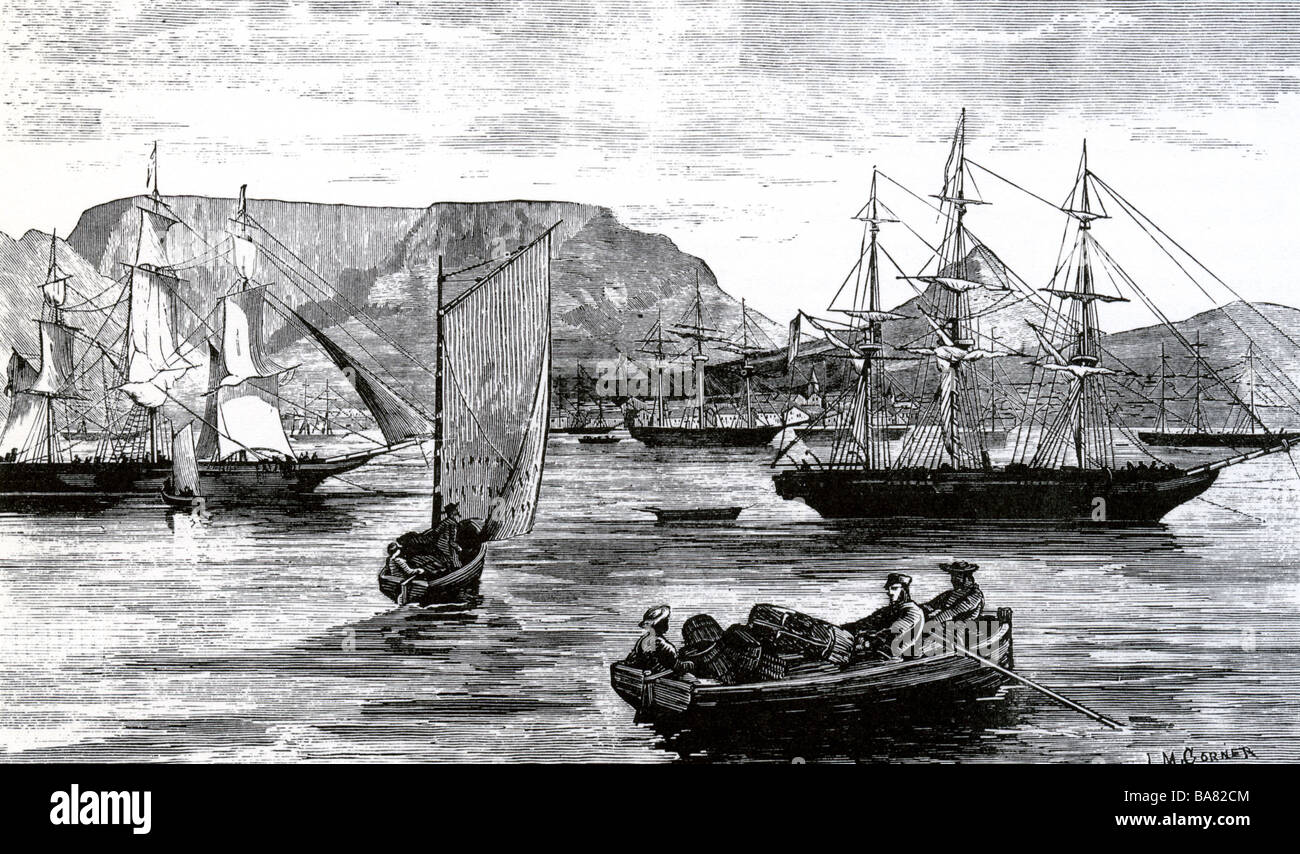 CAPE TOWN in 1830 from a contemporary engraving Stock Photohttps://www.alamy.com/image-license-details/?v=1https://www.alamy.com/stock-photo-cape-town-in-1830-from-a-contemporary-engraving-23534468.html
CAPE TOWN in 1830 from a contemporary engraving Stock Photohttps://www.alamy.com/image-license-details/?v=1https://www.alamy.com/stock-photo-cape-town-in-1830-from-a-contemporary-engraving-23534468.htmlRMBA82CM–CAPE TOWN in 1830 from a contemporary engraving
 Vintage illustration giant Termite mound, (White ant hill), Africa, 19th Century Stock Photohttps://www.alamy.com/image-license-details/?v=1https://www.alamy.com/vintage-illustration-giant-termite-mound-white-ant-hill-africa-19th-century-image439282850.html
Vintage illustration giant Termite mound, (White ant hill), Africa, 19th Century Stock Photohttps://www.alamy.com/image-license-details/?v=1https://www.alamy.com/vintage-illustration-giant-termite-mound-white-ant-hill-africa-19th-century-image439282850.htmlRM2GEK1N6–Vintage illustration giant Termite mound, (White ant hill), Africa, 19th Century
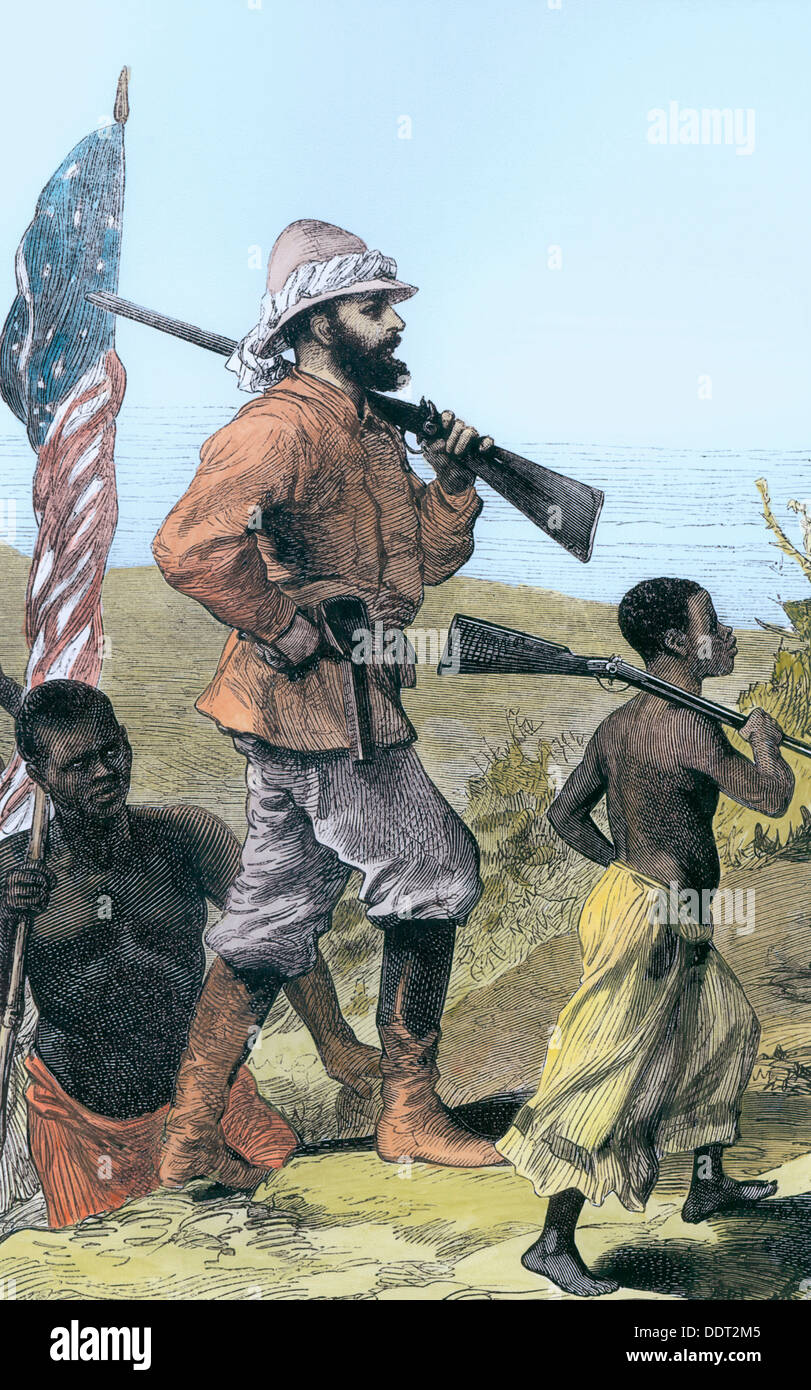 Henry Morton Stanley approaching Lake Tanganyika, Africa, 19th century. Artist: Unknown Stock Photohttps://www.alamy.com/image-license-details/?v=1https://www.alamy.com/henry-morton-stanley-approaching-lake-tanganyika-africa-19th-century-image60150613.html
Henry Morton Stanley approaching Lake Tanganyika, Africa, 19th century. Artist: Unknown Stock Photohttps://www.alamy.com/image-license-details/?v=1https://www.alamy.com/henry-morton-stanley-approaching-lake-tanganyika-africa-19th-century-image60150613.htmlRMDDT2M5–Henry Morton Stanley approaching Lake Tanganyika, Africa, 19th century. Artist: Unknown
 Woman of the San people (Bushman), South Africa, 19th century, in hat, fur cloak and robe. Handcoloured lithograph by J. Bull from James Cowles Prichard's Natural History of Man, Balliere, London, 1855. Stock Photohttps://www.alamy.com/image-license-details/?v=1https://www.alamy.com/woman-of-the-san-people-bushman-south-africa-19th-century-in-hat-fur-cloak-and-robe-handcoloured-lithograph-by-j-bull-from-james-cowles-prichards-natural-history-of-man-balliere-london-1855-image210592157.html
Woman of the San people (Bushman), South Africa, 19th century, in hat, fur cloak and robe. Handcoloured lithograph by J. Bull from James Cowles Prichard's Natural History of Man, Balliere, London, 1855. Stock Photohttps://www.alamy.com/image-license-details/?v=1https://www.alamy.com/woman-of-the-san-people-bushman-south-africa-19th-century-in-hat-fur-cloak-and-robe-handcoloured-lithograph-by-j-bull-from-james-cowles-prichards-natural-history-of-man-balliere-london-1855-image210592157.htmlRMP6H8CD–Woman of the San people (Bushman), South Africa, 19th century, in hat, fur cloak and robe. Handcoloured lithograph by J. Bull from James Cowles Prichard's Natural History of Man, Balliere, London, 1855.
 Woman and child of the San people (Bushman), South Africa, 19th century. Stock Photohttps://www.alamy.com/image-license-details/?v=1https://www.alamy.com/stock-photo-woman-and-child-of-the-san-people-bushman-south-africa-19th-century-72553816.html
Woman and child of the San people (Bushman), South Africa, 19th century. Stock Photohttps://www.alamy.com/image-license-details/?v=1https://www.alamy.com/stock-photo-woman-and-child-of-the-san-people-bushman-south-africa-19th-century-72553816.htmlRME6133M–Woman and child of the San people (Bushman), South Africa, 19th century.
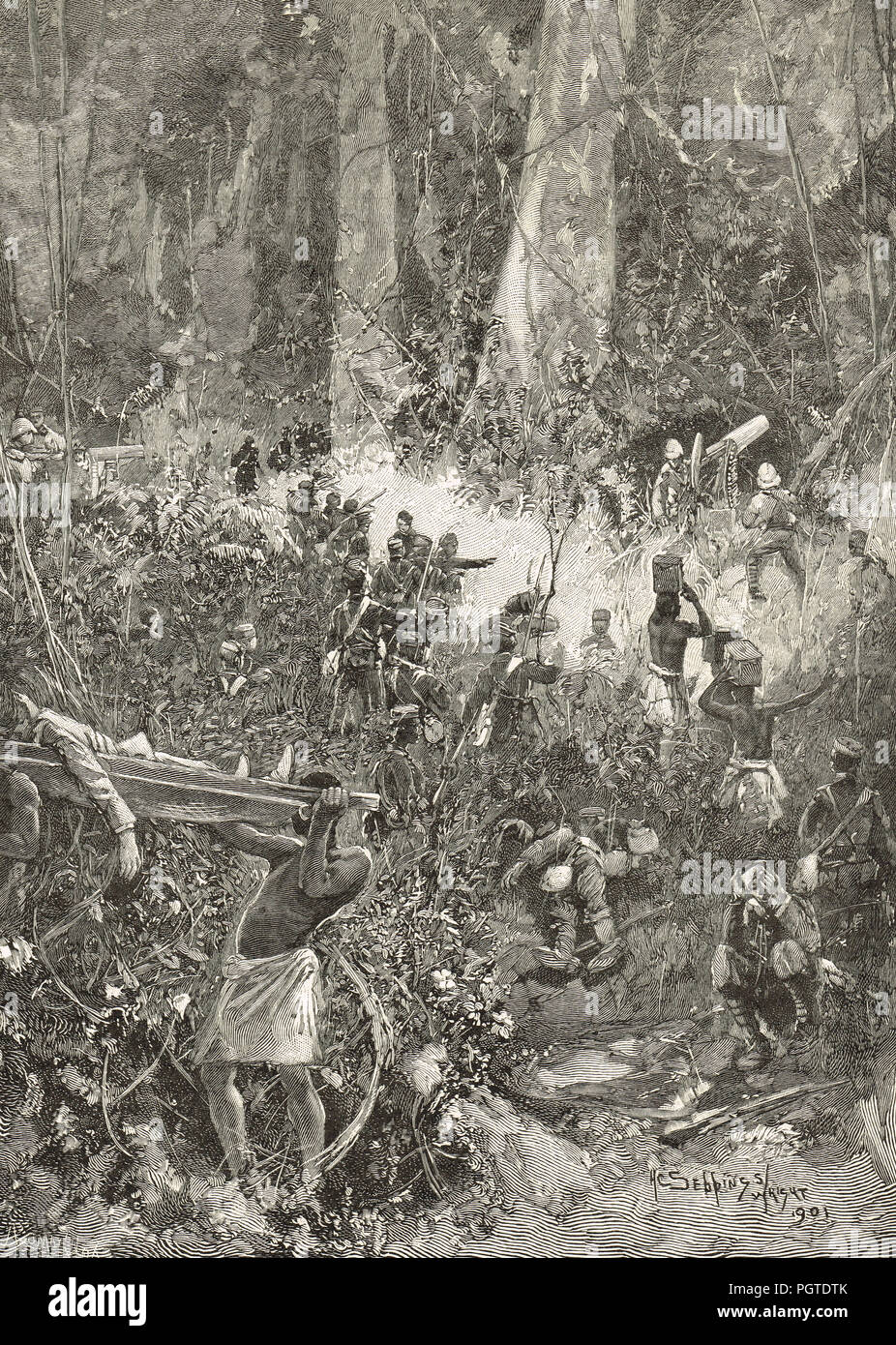 A fight in the Forest , Ashanti war of 1900, 5th Anglo-Ashanti war, also known as the War of the Golden Stool Stock Photohttps://www.alamy.com/image-license-details/?v=1https://www.alamy.com/a-fight-in-the-forest-ashanti-war-of-1900-5th-anglo-ashanti-war-also-known-as-the-war-of-the-golden-stool-image216896643.html
A fight in the Forest , Ashanti war of 1900, 5th Anglo-Ashanti war, also known as the War of the Golden Stool Stock Photohttps://www.alamy.com/image-license-details/?v=1https://www.alamy.com/a-fight-in-the-forest-ashanti-war-of-1900-5th-anglo-ashanti-war-also-known-as-the-war-of-the-golden-stool-image216896643.htmlRMPGTDTK–A fight in the Forest , Ashanti war of 1900, 5th Anglo-Ashanti war, also known as the War of the Golden Stool
 Vintage map of Togo and neighboring countries at the end of 19th century Stock Photohttps://www.alamy.com/image-license-details/?v=1https://www.alamy.com/stock-photo-vintage-map-of-togo-and-neighboring-countries-at-the-end-of-19th-century-52308766.html
Vintage map of Togo and neighboring countries at the end of 19th century Stock Photohttps://www.alamy.com/image-license-details/?v=1https://www.alamy.com/stock-photo-vintage-map-of-togo-and-neighboring-countries-at-the-end-of-19th-century-52308766.htmlRFD12TA6–Vintage map of Togo and neighboring countries at the end of 19th century
 Sculpture 19th Century ( Wood ) Mende Sierra Leone West Africa Stock Photohttps://www.alamy.com/image-license-details/?v=1https://www.alamy.com/stock-photo-sculpture-19th-century-wood-mende-sierra-leone-west-africa-82235397.html
Sculpture 19th Century ( Wood ) Mende Sierra Leone West Africa Stock Photohttps://www.alamy.com/image-license-details/?v=1https://www.alamy.com/stock-photo-sculpture-19th-century-wood-mende-sierra-leone-west-africa-82235397.htmlRMENP42D–Sculpture 19th Century ( Wood ) Mende Sierra Leone West Africa
 Northwest Africa, Morocco, 19th Century Stock Photohttps://www.alamy.com/image-license-details/?v=1https://www.alamy.com/northwest-africa-morocco-19th-century-image352773795.html
Northwest Africa, Morocco, 19th Century Stock Photohttps://www.alamy.com/image-license-details/?v=1https://www.alamy.com/northwest-africa-morocco-19th-century-image352773795.htmlRM2BDX6G3–Northwest Africa, Morocco, 19th Century
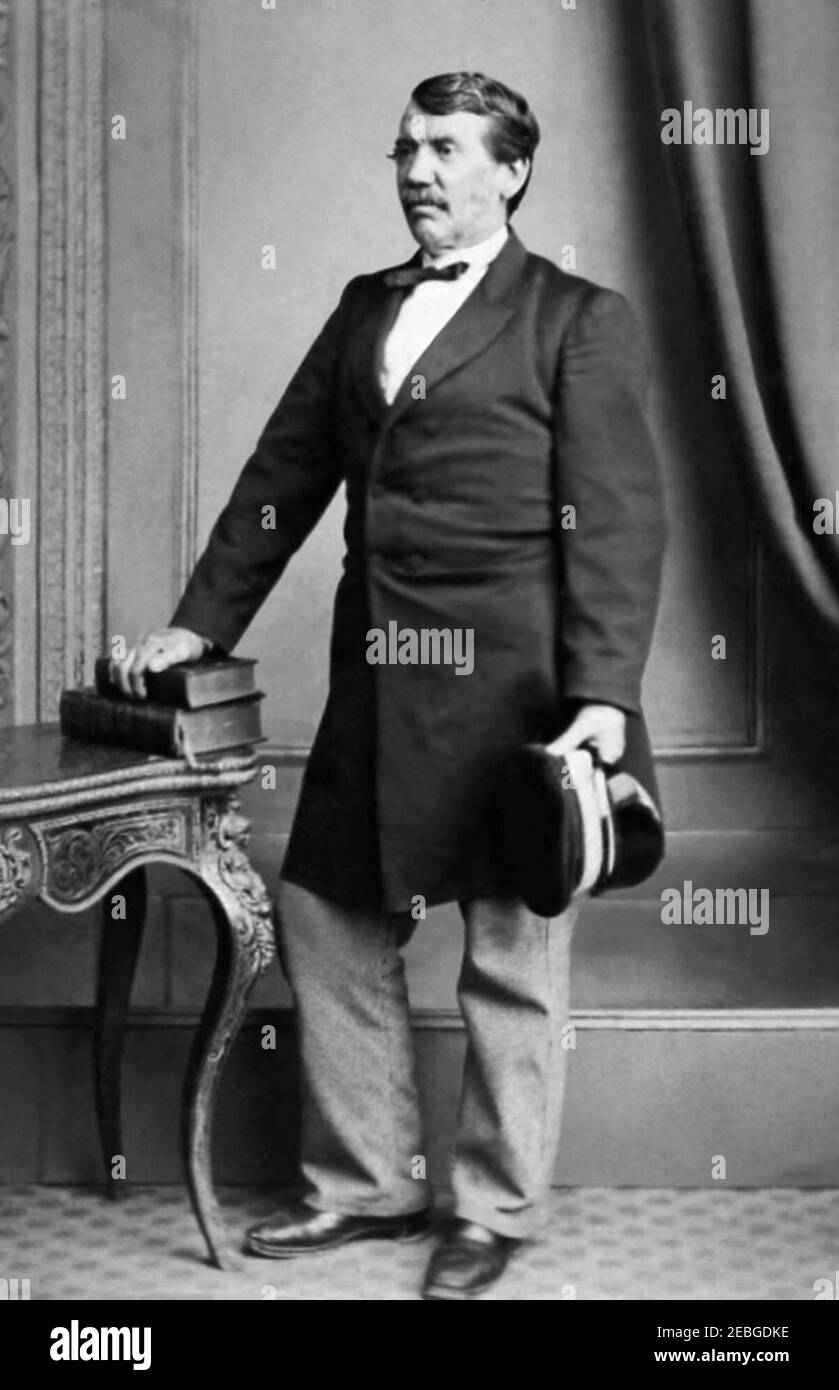 David Livingstone (1813–1873), Scottish physician, Congregationalist, pioneer Christian missionary with the London Missionary Society, explorer in Africa, and one of the most popular British heroes of the late 19th-century Victorian era. Stock Photohttps://www.alamy.com/image-license-details/?v=1https://www.alamy.com/david-livingstone-18131873-scottish-physician-congregationalist-pioneer-christian-missionary-with-the-london-missionary-society-explorer-in-africa-and-one-of-the-most-popular-british-heroes-of-the-late-19th-century-victorian-era-image402961650.html
David Livingstone (1813–1873), Scottish physician, Congregationalist, pioneer Christian missionary with the London Missionary Society, explorer in Africa, and one of the most popular British heroes of the late 19th-century Victorian era. Stock Photohttps://www.alamy.com/image-license-details/?v=1https://www.alamy.com/david-livingstone-18131873-scottish-physician-congregationalist-pioneer-christian-missionary-with-the-london-missionary-society-explorer-in-africa-and-one-of-the-most-popular-british-heroes-of-the-late-19th-century-victorian-era-image402961650.htmlRM2EBGDKE–David Livingstone (1813–1873), Scottish physician, Congregationalist, pioneer Christian missionary with the London Missionary Society, explorer in Africa, and one of the most popular British heroes of the late 19th-century Victorian era.
 The village of Combo-Combo, Central Africa in the 19th century. Stock Photohttps://www.alamy.com/image-license-details/?v=1https://www.alamy.com/stock-photo-the-village-of-combo-combo-central-africa-in-the-19th-century-29724078.html
The village of Combo-Combo, Central Africa in the 19th century. Stock Photohttps://www.alamy.com/image-license-details/?v=1https://www.alamy.com/stock-photo-the-village-of-combo-combo-central-africa-in-the-19th-century-29724078.htmlRMBMA1A6–The village of Combo-Combo, Central Africa in the 19th century.
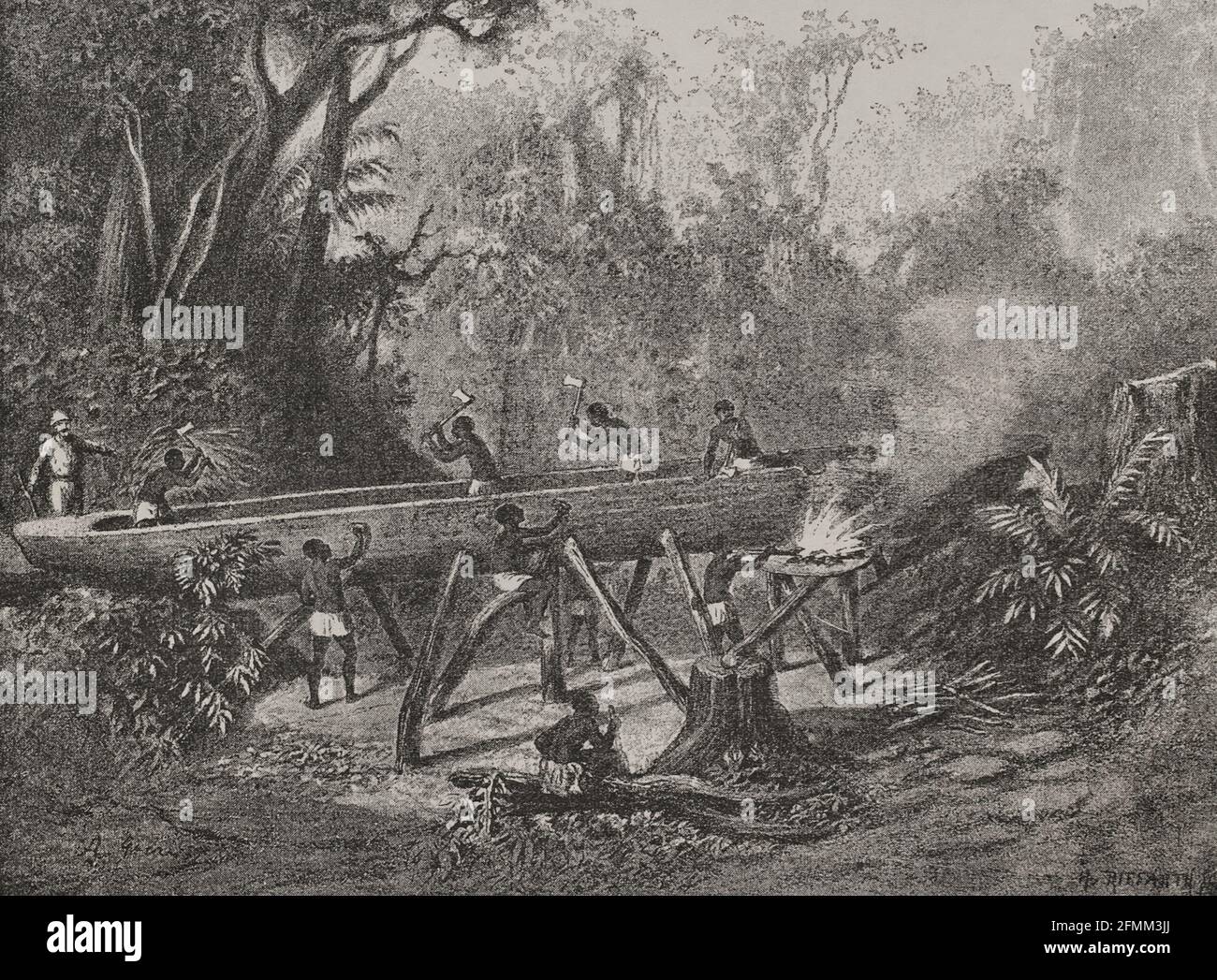 History of Africa. 19th century. Canoe construction. Engraving. El Congo y la Creación del Estado Independiente de este nombre. Historia de los Trabajos y Exploraciones Verificados (The Congo and the Founding of its Free State. A Story of Work and Exploration), by Henry M. Stanley. Edited in Barcelona, ca.1 890. Spain. Stock Photohttps://www.alamy.com/image-license-details/?v=1https://www.alamy.com/history-of-africa-19th-century-canoe-construction-engraving-el-congo-y-la-creacin-del-estado-independiente-de-este-nombre-historia-de-los-trabajos-y-exploraciones-verificados-the-congo-and-the-founding-of-its-free-state-a-story-of-work-and-exploration-by-henry-m-stanley-edited-in-barcelona-ca1-890-spain-image425783866.html
History of Africa. 19th century. Canoe construction. Engraving. El Congo y la Creación del Estado Independiente de este nombre. Historia de los Trabajos y Exploraciones Verificados (The Congo and the Founding of its Free State. A Story of Work and Exploration), by Henry M. Stanley. Edited in Barcelona, ca.1 890. Spain. Stock Photohttps://www.alamy.com/image-license-details/?v=1https://www.alamy.com/history-of-africa-19th-century-canoe-construction-engraving-el-congo-y-la-creacin-del-estado-independiente-de-este-nombre-historia-de-los-trabajos-y-exploraciones-verificados-the-congo-and-the-founding-of-its-free-state-a-story-of-work-and-exploration-by-henry-m-stanley-edited-in-barcelona-ca1-890-spain-image425783866.htmlRM2FMM3JJ–History of Africa. 19th century. Canoe construction. Engraving. El Congo y la Creación del Estado Independiente de este nombre. Historia de los Trabajos y Exploraciones Verificados (The Congo and the Founding of its Free State. A Story of Work and Exploration), by Henry M. Stanley. Edited in Barcelona, ca.1 890. Spain.
 Art inspired by Vue de la Rapide de la Premiere Cataracte, Antonio Beato, Italian and British, ca. 1825-ca.1903, Albumen silver photograph, Africa, 19th century, image/sheet: 7 15/16 x 10 3/16 in., 20.1 x 25.8 cm, 19th Century, Albumen Silver Photograph, Antonio Beato, Black and White, Classic works modernized by Artotop with a splash of modernity. Shapes, color and value, eye-catching visual impact on art. Emotions through freedom of artworks in a contemporary way. A timeless message pursuing a wildly creative new direction. Artists turning to the digital medium and creating the Artotop NFT Stock Photohttps://www.alamy.com/image-license-details/?v=1https://www.alamy.com/art-inspired-by-vue-de-la-rapide-de-la-premiere-cataracte-antonio-beato-italian-and-british-ca-1825-ca1903-albumen-silver-photograph-africa-19th-century-imagesheet-7-1516-x-10-316-in-201-x-258-cm-19th-century-albumen-silver-photograph-antonio-beato-black-and-white-classic-works-modernized-by-artotop-with-a-splash-of-modernity-shapes-color-and-value-eye-catching-visual-impact-on-art-emotions-through-freedom-of-artworks-in-a-contemporary-way-a-timeless-message-pursuing-a-wildly-creative-new-direction-artists-turning-to-the-digital-medium-and-creating-the-artotop-nft-image459572988.html
Art inspired by Vue de la Rapide de la Premiere Cataracte, Antonio Beato, Italian and British, ca. 1825-ca.1903, Albumen silver photograph, Africa, 19th century, image/sheet: 7 15/16 x 10 3/16 in., 20.1 x 25.8 cm, 19th Century, Albumen Silver Photograph, Antonio Beato, Black and White, Classic works modernized by Artotop with a splash of modernity. Shapes, color and value, eye-catching visual impact on art. Emotions through freedom of artworks in a contemporary way. A timeless message pursuing a wildly creative new direction. Artists turning to the digital medium and creating the Artotop NFT Stock Photohttps://www.alamy.com/image-license-details/?v=1https://www.alamy.com/art-inspired-by-vue-de-la-rapide-de-la-premiere-cataracte-antonio-beato-italian-and-british-ca-1825-ca1903-albumen-silver-photograph-africa-19th-century-imagesheet-7-1516-x-10-316-in-201-x-258-cm-19th-century-albumen-silver-photograph-antonio-beato-black-and-white-classic-works-modernized-by-artotop-with-a-splash-of-modernity-shapes-color-and-value-eye-catching-visual-impact-on-art-emotions-through-freedom-of-artworks-in-a-contemporary-way-a-timeless-message-pursuing-a-wildly-creative-new-direction-artists-turning-to-the-digital-medium-and-creating-the-artotop-nft-image459572988.htmlRF2HKKA10–Art inspired by Vue de la Rapide de la Premiere Cataracte, Antonio Beato, Italian and British, ca. 1825-ca.1903, Albumen silver photograph, Africa, 19th century, image/sheet: 7 15/16 x 10 3/16 in., 20.1 x 25.8 cm, 19th Century, Albumen Silver Photograph, Antonio Beato, Black and White, Classic works modernized by Artotop with a splash of modernity. Shapes, color and value, eye-catching visual impact on art. Emotions through freedom of artworks in a contemporary way. A timeless message pursuing a wildly creative new direction. Artists turning to the digital medium and creating the Artotop NFT
 Travels in South Africa, 19th century engraving, Kurreechane, Meribohwhey, 1822 Stock Photohttps://www.alamy.com/image-license-details/?v=1https://www.alamy.com/stock-photo-travels-in-south-africa-19th-century-engraving-kurreechane-meribohwhey-123388441.html
Travels in South Africa, 19th century engraving, Kurreechane, Meribohwhey, 1822 Stock Photohttps://www.alamy.com/image-license-details/?v=1https://www.alamy.com/stock-photo-travels-in-south-africa-19th-century-engraving-kurreechane-meribohwhey-123388441.htmlRMH4MR61–Travels in South Africa, 19th century engraving, Kurreechane, Meribohwhey, 1822
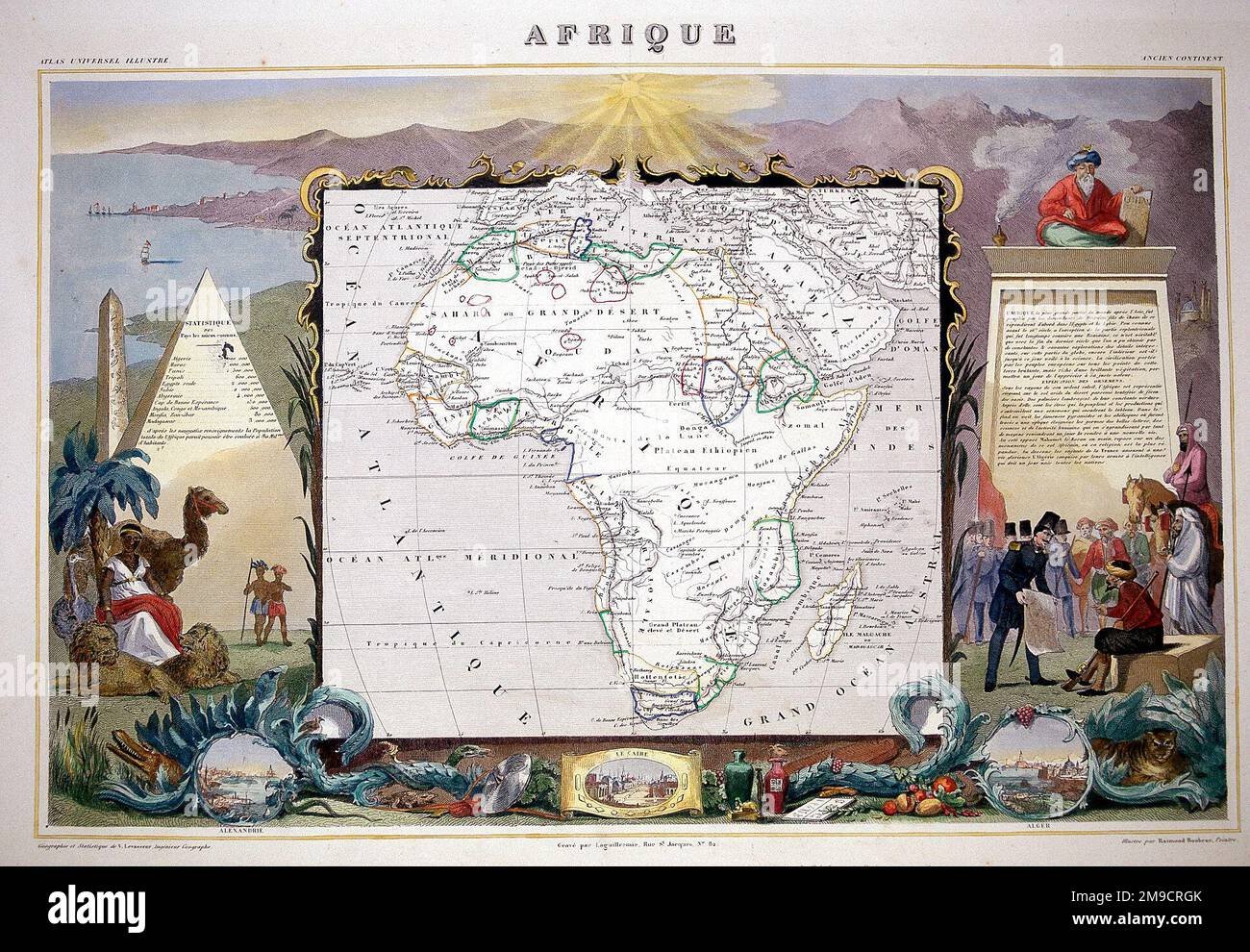 19th century Map of Africa Stock Photohttps://www.alamy.com/image-license-details/?v=1https://www.alamy.com/19th-century-map-of-africa-image504914499.html
19th century Map of Africa Stock Photohttps://www.alamy.com/image-license-details/?v=1https://www.alamy.com/19th-century-map-of-africa-image504914499.htmlRM2M9CRGK–19th century Map of Africa
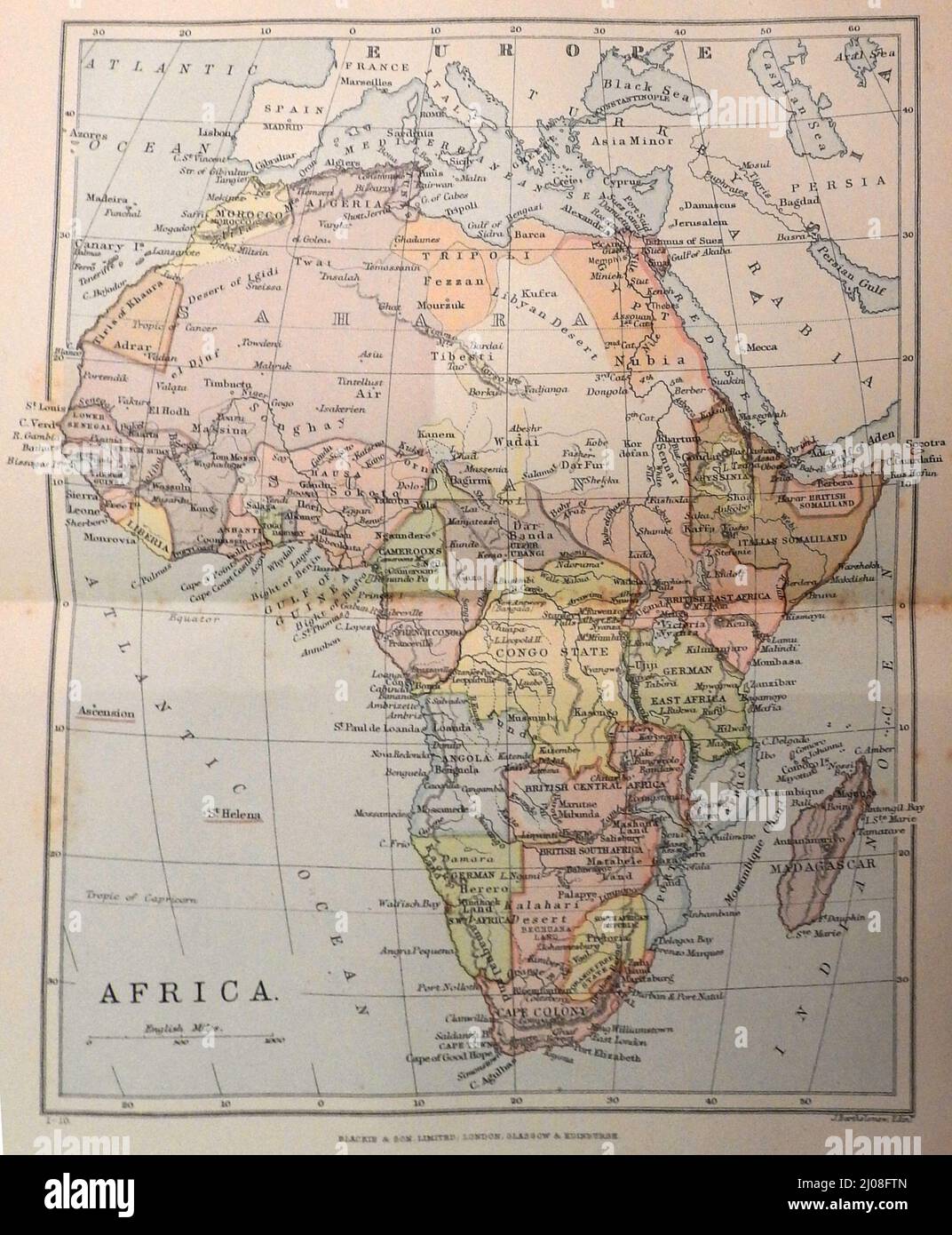 A late 19th century map of Africa showing lots of old former names and boundaries / borders. Stock Photohttps://www.alamy.com/image-license-details/?v=1https://www.alamy.com/a-late-19th-century-map-of-africa-showing-lots-of-old-former-names-and-boundaries-borders-image464868005.html
A late 19th century map of Africa showing lots of old former names and boundaries / borders. Stock Photohttps://www.alamy.com/image-license-details/?v=1https://www.alamy.com/a-late-19th-century-map-of-africa-showing-lots-of-old-former-names-and-boundaries-borders-image464868005.htmlRM2J08FTN–A late 19th century map of Africa showing lots of old former names and boundaries / borders.
 State sword (eben and ada) made from Iron, steel, and ivory. Kingdom of Benin, Nigeria, West Africa. 19th century Stock Photohttps://www.alamy.com/image-license-details/?v=1https://www.alamy.com/state-sword-eben-and-ada-made-from-iron-steel-and-ivory-kingdom-of-benin-nigeria-west-africa-19th-century-image235037486.html
State sword (eben and ada) made from Iron, steel, and ivory. Kingdom of Benin, Nigeria, West Africa. 19th century Stock Photohttps://www.alamy.com/image-license-details/?v=1https://www.alamy.com/state-sword-eben-and-ada-made-from-iron-steel-and-ivory-kingdom-of-benin-nigeria-west-africa-19th-century-image235037486.htmlRMRJATKX–State sword (eben and ada) made from Iron, steel, and ivory. Kingdom of Benin, Nigeria, West Africa. 19th century
 Cape Town, South Africa, 19th century.Artist: St de Dree Stock Photohttps://www.alamy.com/image-license-details/?v=1https://www.alamy.com/cape-town-south-africa-19th-centuryartist-st-de-dree-image262752143.html
Cape Town, South Africa, 19th century.Artist: St de Dree Stock Photohttps://www.alamy.com/image-license-details/?v=1https://www.alamy.com/cape-town-south-africa-19th-centuryartist-st-de-dree-image262752143.htmlRMW7DB13–Cape Town, South Africa, 19th century.Artist: St de Dree
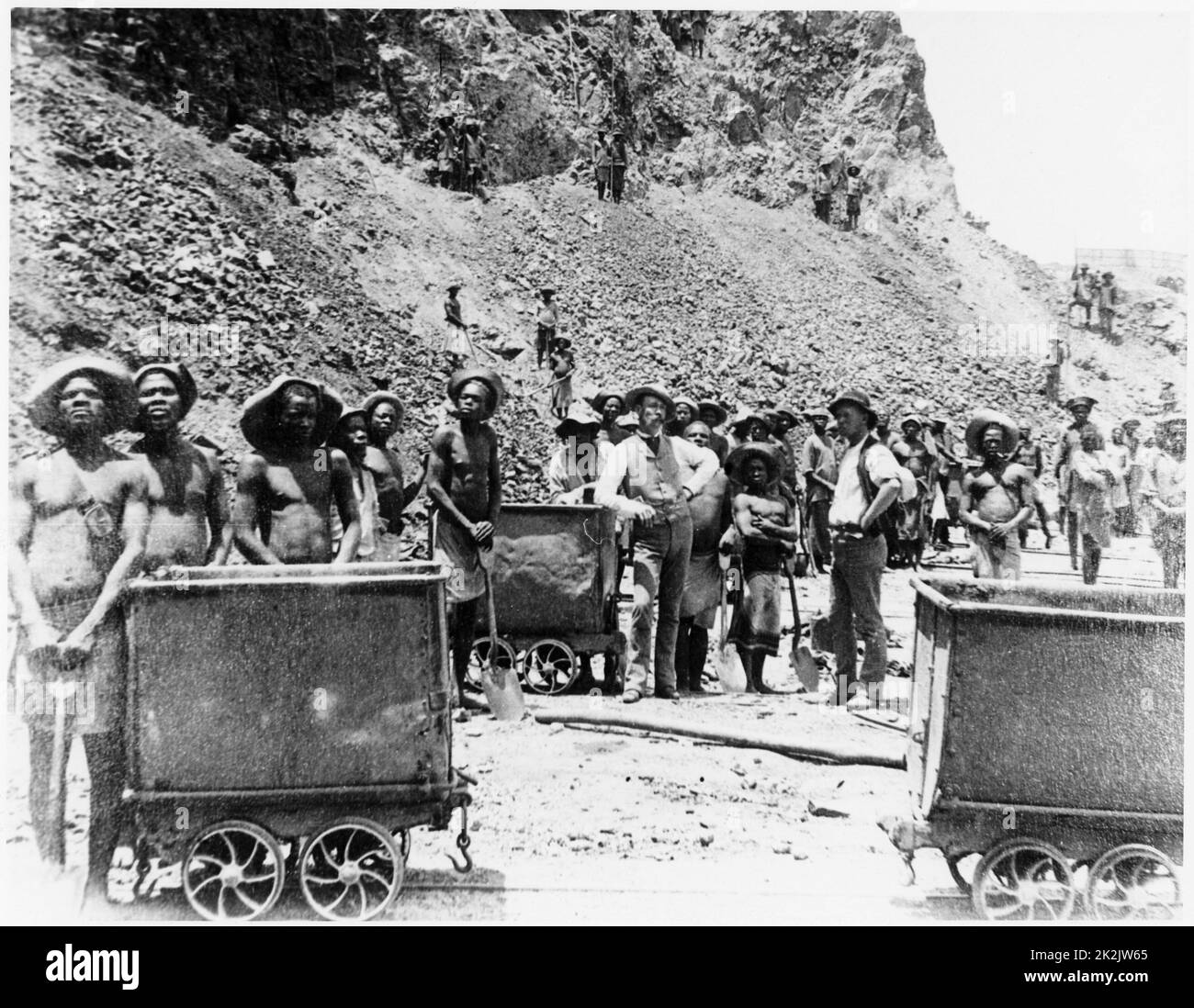 Zulu 'boys' at De Beers diamond mines. From photograph taken c.1885. In 1887 and 1888 Cecil Rhodes amalgamated the diamond mines around Kimberley, which included De Beers, into Consolidated Mines Stock Photohttps://www.alamy.com/image-license-details/?v=1https://www.alamy.com/zulu-boys-at-de-beers-diamond-mines-from-photograph-taken-c1885-in-1887-and-1888-cecil-rhodes-amalgamated-the-diamond-mines-around-kimberley-which-included-de-beers-into-consolidated-mines-image483534525.html
Zulu 'boys' at De Beers diamond mines. From photograph taken c.1885. In 1887 and 1888 Cecil Rhodes amalgamated the diamond mines around Kimberley, which included De Beers, into Consolidated Mines Stock Photohttps://www.alamy.com/image-license-details/?v=1https://www.alamy.com/zulu-boys-at-de-beers-diamond-mines-from-photograph-taken-c1885-in-1887-and-1888-cecil-rhodes-amalgamated-the-diamond-mines-around-kimberley-which-included-de-beers-into-consolidated-mines-image483534525.htmlRM2K2JW65–Zulu 'boys' at De Beers diamond mines. From photograph taken c.1885. In 1887 and 1888 Cecil Rhodes amalgamated the diamond mines around Kimberley, which included De Beers, into Consolidated Mines
 IMMIGRANTS TO SOUTH AFRICA are attacked as they travel north from Caper Town in this early 19th century engraving ATTACKED Stock Photohttps://www.alamy.com/image-license-details/?v=1https://www.alamy.com/stock-photo-immigrants-to-south-africa-are-attacked-as-they-travel-north-from-23534641.html
IMMIGRANTS TO SOUTH AFRICA are attacked as they travel north from Caper Town in this early 19th century engraving ATTACKED Stock Photohttps://www.alamy.com/image-license-details/?v=1https://www.alamy.com/stock-photo-immigrants-to-south-africa-are-attacked-as-they-travel-north-from-23534641.htmlRMBA82JW–IMMIGRANTS TO SOUTH AFRICA are attacked as they travel north from Caper Town in this early 19th century engraving ATTACKED
 Victorian big game hunting South Africa, 19th Century Stock Photohttps://www.alamy.com/image-license-details/?v=1https://www.alamy.com/victorian-big-game-hunting-south-africa-19th-century-image243070637.html
Victorian big game hunting South Africa, 19th Century Stock Photohttps://www.alamy.com/image-license-details/?v=1https://www.alamy.com/victorian-big-game-hunting-south-africa-19th-century-image243070637.htmlRMT3CR25–Victorian big game hunting South Africa, 19th Century
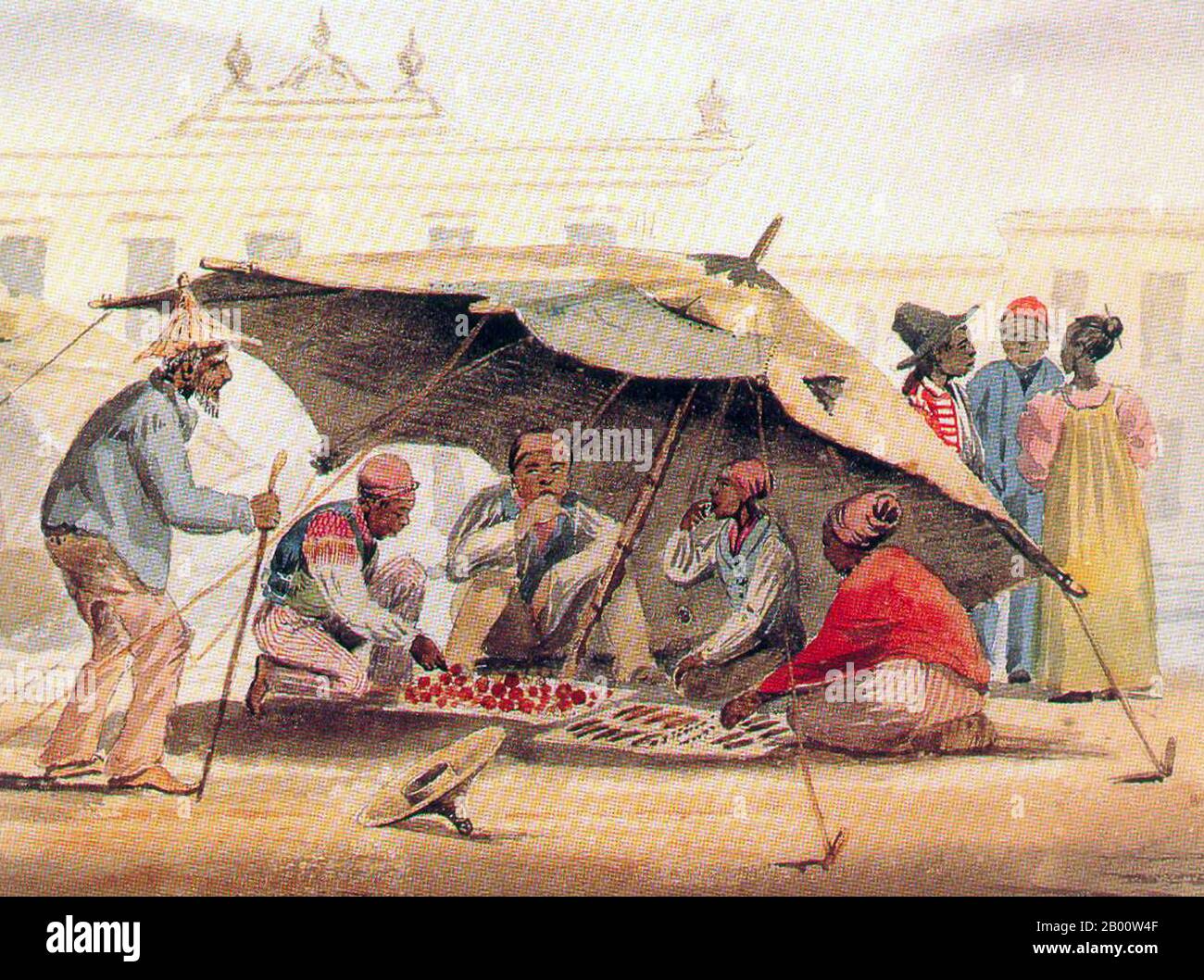 South Africa: 'Cape Coloureds'. Watercolour painting by Charles Davidson Bell (1813-1882), mid-19th century. The term Cape Coloureds refers to the modern-day descendants of slave labourers imported into South Africa by Dutch settlers as well as to other groups of mixed ancestry originating in the present-day Western Cape. They are the predominant population group found in the Western Cape Province. Their population size is roughly 4 million, and most Cape Coloureds are mother tongue Afrikaans speakers. Stock Photohttps://www.alamy.com/image-license-details/?v=1https://www.alamy.com/south-africa-cape-coloureds-watercolour-painting-by-charles-davidson-bell-1813-1882-mid-19th-century-the-term-cape-coloureds-refers-to-the-modern-day-descendants-of-slave-labourers-imported-into-south-africa-by-dutch-settlers-as-well-as-to-other-groups-of-mixed-ancestry-originating-in-the-present-day-western-cape-they-are-the-predominant-population-group-found-in-the-western-cape-province-their-population-size-is-roughly-4-million-and-most-cape-coloureds-are-mother-tongue-afrikaans-speakers-image344227087.html
South Africa: 'Cape Coloureds'. Watercolour painting by Charles Davidson Bell (1813-1882), mid-19th century. The term Cape Coloureds refers to the modern-day descendants of slave labourers imported into South Africa by Dutch settlers as well as to other groups of mixed ancestry originating in the present-day Western Cape. They are the predominant population group found in the Western Cape Province. Their population size is roughly 4 million, and most Cape Coloureds are mother tongue Afrikaans speakers. Stock Photohttps://www.alamy.com/image-license-details/?v=1https://www.alamy.com/south-africa-cape-coloureds-watercolour-painting-by-charles-davidson-bell-1813-1882-mid-19th-century-the-term-cape-coloureds-refers-to-the-modern-day-descendants-of-slave-labourers-imported-into-south-africa-by-dutch-settlers-as-well-as-to-other-groups-of-mixed-ancestry-originating-in-the-present-day-western-cape-they-are-the-predominant-population-group-found-in-the-western-cape-province-their-population-size-is-roughly-4-million-and-most-cape-coloureds-are-mother-tongue-afrikaans-speakers-image344227087.htmlRM2B00W4F–South Africa: 'Cape Coloureds'. Watercolour painting by Charles Davidson Bell (1813-1882), mid-19th century. The term Cape Coloureds refers to the modern-day descendants of slave labourers imported into South Africa by Dutch settlers as well as to other groups of mixed ancestry originating in the present-day Western Cape. They are the predominant population group found in the Western Cape Province. Their population size is roughly 4 million, and most Cape Coloureds are mother tongue Afrikaans speakers.
 Woman and child of the San people (Bushman), South Africa, 19th century, in fur cloak and dress, smoking a tobacco pipe. Handcoloured lithograph by J. Bull from James Cowles Prichard's Natural History of Man, Balliere, London, 1855. Stock Photohttps://www.alamy.com/image-license-details/?v=1https://www.alamy.com/woman-and-child-of-the-san-people-bushman-south-africa-19th-century-in-fur-cloak-and-dress-smoking-a-tobacco-pipe-handcoloured-lithograph-by-j-bull-from-james-cowles-prichards-natural-history-of-man-balliere-london-1855-image210593614.html
Woman and child of the San people (Bushman), South Africa, 19th century, in fur cloak and dress, smoking a tobacco pipe. Handcoloured lithograph by J. Bull from James Cowles Prichard's Natural History of Man, Balliere, London, 1855. Stock Photohttps://www.alamy.com/image-license-details/?v=1https://www.alamy.com/woman-and-child-of-the-san-people-bushman-south-africa-19th-century-in-fur-cloak-and-dress-smoking-a-tobacco-pipe-handcoloured-lithograph-by-j-bull-from-james-cowles-prichards-natural-history-of-man-balliere-london-1855-image210593614.htmlRMP6HA8E–Woman and child of the San people (Bushman), South Africa, 19th century, in fur cloak and dress, smoking a tobacco pipe. Handcoloured lithograph by J. Bull from James Cowles Prichard's Natural History of Man, Balliere, London, 1855.
 . A moonlit street in North Africa . 19th century (Second half) 246 Girardet A moonlit street in North Africa Stock Photohttps://www.alamy.com/image-license-details/?v=1https://www.alamy.com/a-moonlit-street-in-north-africa-19th-century-second-half-246-girardet-a-moonlit-street-in-north-africa-image188301631.html
. A moonlit street in North Africa . 19th century (Second half) 246 Girardet A moonlit street in North Africa Stock Photohttps://www.alamy.com/image-license-details/?v=1https://www.alamy.com/a-moonlit-street-in-north-africa-19th-century-second-half-246-girardet-a-moonlit-street-in-north-africa-image188301631.htmlRMMX9TJ7–. A moonlit street in North Africa . 19th century (Second half) 246 Girardet A moonlit street in North Africa
 General Cronje, held prisoner after defeat at at the Battle of Paardeberg, 27 February 1900 Stock Photohttps://www.alamy.com/image-license-details/?v=1https://www.alamy.com/general-cronje-held-prisoner-after-defeat-at-at-the-battle-of-paardeberg-27-february-1900-image216896640.html
General Cronje, held prisoner after defeat at at the Battle of Paardeberg, 27 February 1900 Stock Photohttps://www.alamy.com/image-license-details/?v=1https://www.alamy.com/general-cronje-held-prisoner-after-defeat-at-at-the-battle-of-paardeberg-27-february-1900-image216896640.htmlRMPGTDTG–General Cronje, held prisoner after defeat at at the Battle of Paardeberg, 27 February 1900
 Maison Eureka, toilet, toilet seat, 19th century, Moka, Indian Ocean, island, Mauritius, Africa Stock Photohttps://www.alamy.com/image-license-details/?v=1https://www.alamy.com/maison-eureka-toilet-toilet-seat-19th-century-moka-indian-ocean-island-mauritius-africa-image625784308.html
Maison Eureka, toilet, toilet seat, 19th century, Moka, Indian Ocean, island, Mauritius, Africa Stock Photohttps://www.alamy.com/image-license-details/?v=1https://www.alamy.com/maison-eureka-toilet-toilet-seat-19th-century-moka-indian-ocean-island-mauritius-africa-image625784308.htmlRM2YA2X7G–Maison Eureka, toilet, toilet seat, 19th century, Moka, Indian Ocean, island, Mauritius, Africa
 Statue Man 20th - 19th Century, Congo, Africa Museum, Brussels, Belgium, Wood. Stock Photohttps://www.alamy.com/image-license-details/?v=1https://www.alamy.com/statue-man-20th-19th-century-congo-africa-museum-brussels-belgium-wood-image621134489.html
Statue Man 20th - 19th Century, Congo, Africa Museum, Brussels, Belgium, Wood. Stock Photohttps://www.alamy.com/image-license-details/?v=1https://www.alamy.com/statue-man-20th-19th-century-congo-africa-museum-brussels-belgium-wood-image621134489.htmlRM2Y2F3AH–Statue Man 20th - 19th Century, Congo, Africa Museum, Brussels, Belgium, Wood.
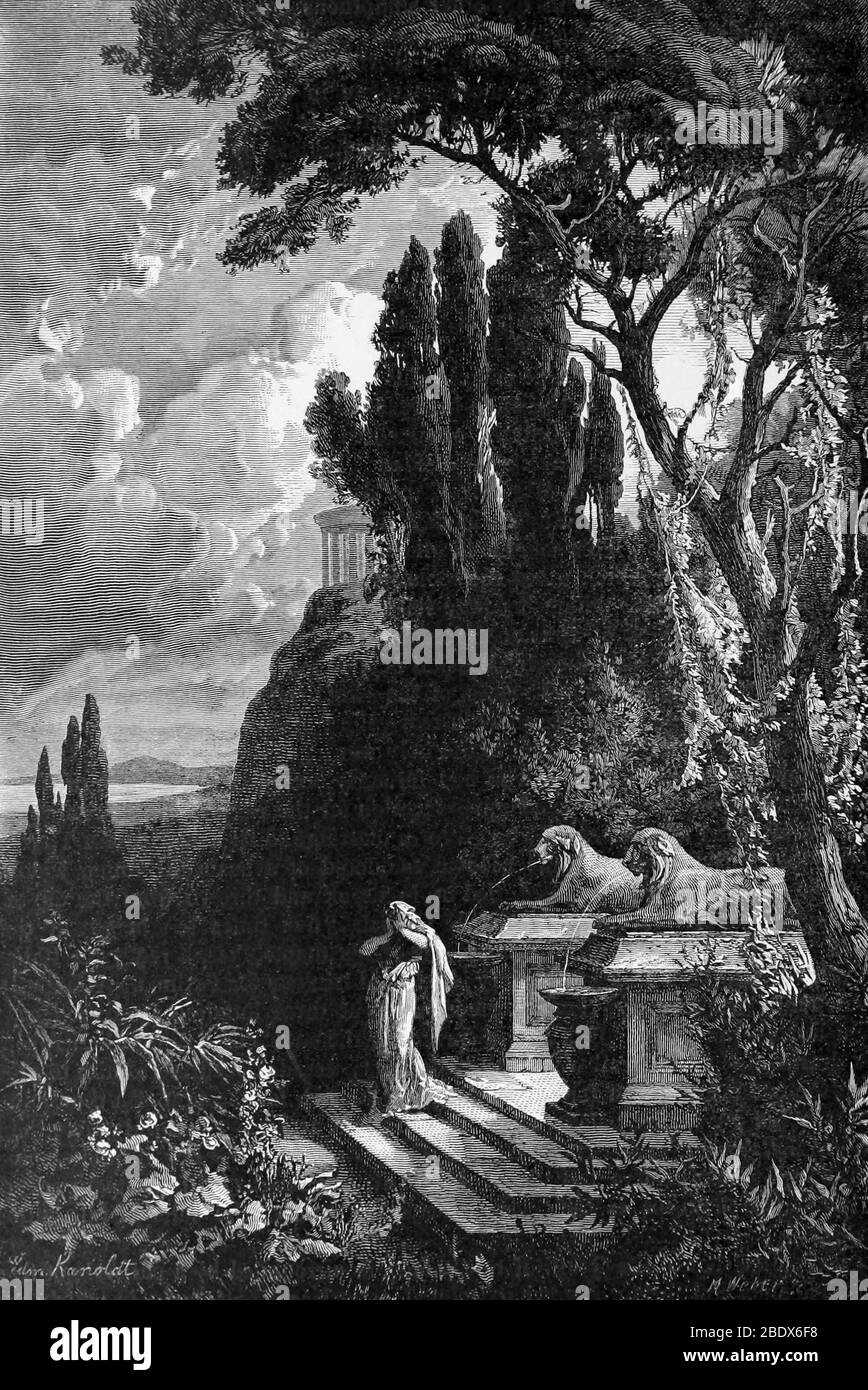 North Africa, Carthage, 19th Century Stock Photohttps://www.alamy.com/image-license-details/?v=1https://www.alamy.com/north-africa-carthage-19th-century-image352773772.html
North Africa, Carthage, 19th Century Stock Photohttps://www.alamy.com/image-license-details/?v=1https://www.alamy.com/north-africa-carthage-19th-century-image352773772.htmlRM2BDX6F8–North Africa, Carthage, 19th Century
 David Livingstone (1813–1873), Scottish physician, Congregationalist, pioneer Christian missionary with the London Missionary Society, explorer in Africa, and one of the most popular British heroes of the late 19th-century Victorian era. Stock Photohttps://www.alamy.com/image-license-details/?v=1https://www.alamy.com/david-livingstone-18131873-scottish-physician-congregationalist-pioneer-christian-missionary-with-the-london-missionary-society-explorer-in-africa-and-one-of-the-most-popular-british-heroes-of-the-late-19th-century-victorian-era-image402961642.html
David Livingstone (1813–1873), Scottish physician, Congregationalist, pioneer Christian missionary with the London Missionary Society, explorer in Africa, and one of the most popular British heroes of the late 19th-century Victorian era. Stock Photohttps://www.alamy.com/image-license-details/?v=1https://www.alamy.com/david-livingstone-18131873-scottish-physician-congregationalist-pioneer-christian-missionary-with-the-london-missionary-society-explorer-in-africa-and-one-of-the-most-popular-british-heroes-of-the-late-19th-century-victorian-era-image402961642.htmlRM2EBGDK6–David Livingstone (1813–1873), Scottish physician, Congregationalist, pioneer Christian missionary with the London Missionary Society, explorer in Africa, and one of the most popular British heroes of the late 19th-century Victorian era.
 The capital of Uhehe, Tanzania, Central Africa as it was in the late 19th century. Stock Photohttps://www.alamy.com/image-license-details/?v=1https://www.alamy.com/stock-photo-the-capital-of-uhehe-tanzania-central-africa-as-it-was-in-the-late-29724430.html
The capital of Uhehe, Tanzania, Central Africa as it was in the late 19th century. Stock Photohttps://www.alamy.com/image-license-details/?v=1https://www.alamy.com/stock-photo-the-capital-of-uhehe-tanzania-central-africa-as-it-was-in-the-late-29724430.htmlRMBMA1PP–The capital of Uhehe, Tanzania, Central Africa as it was in the late 19th century.
 History of Africa. 19th century. Village of Ndua. Engraving. El Congo y la Creación del Estado Independiente de este nombre. Historia de los Trabajos y Exploraciones Verificados (The Congo and the Founding of its Free State. A Story of Work and Exploration), by Henry M. Stanley. Edited in Barcelona, ca.1890. Spain. Stock Photohttps://www.alamy.com/image-license-details/?v=1https://www.alamy.com/history-of-africa-19th-century-village-of-ndua-engraving-el-congo-y-la-creacin-del-estado-independiente-de-este-nombre-historia-de-los-trabajos-y-exploraciones-verificados-the-congo-and-the-founding-of-its-free-state-a-story-of-work-and-exploration-by-henry-m-stanley-edited-in-barcelona-ca1890-spain-image425493701.html
History of Africa. 19th century. Village of Ndua. Engraving. El Congo y la Creación del Estado Independiente de este nombre. Historia de los Trabajos y Exploraciones Verificados (The Congo and the Founding of its Free State. A Story of Work and Exploration), by Henry M. Stanley. Edited in Barcelona, ca.1890. Spain. Stock Photohttps://www.alamy.com/image-license-details/?v=1https://www.alamy.com/history-of-africa-19th-century-village-of-ndua-engraving-el-congo-y-la-creacin-del-estado-independiente-de-este-nombre-historia-de-los-trabajos-y-exploraciones-verificados-the-congo-and-the-founding-of-its-free-state-a-story-of-work-and-exploration-by-henry-m-stanley-edited-in-barcelona-ca1890-spain-image425493701.htmlRM2FM6WFH–History of Africa. 19th century. Village of Ndua. Engraving. El Congo y la Creación del Estado Independiente de este nombre. Historia de los Trabajos y Exploraciones Verificados (The Congo and the Founding of its Free State. A Story of Work and Exploration), by Henry M. Stanley. Edited in Barcelona, ca.1890. Spain.
 19th century map of Africa from the 'Encyclopaedia Londinensis, or, Universal Dictionary of Arts, Sciences and Literature; Volume I. Edited by John Wilkes. Published in London, Great, Britain, in 1810. Stock Photohttps://www.alamy.com/image-license-details/?v=1https://www.alamy.com/19th-century-map-of-africa-from-the-encyclopaedia-londinensis-or-universal-dictionary-of-arts-sciences-and-literature-volume-i-edited-by-john-wilkes-published-in-london-great-britain-in-1810-image454450286.html
19th century map of Africa from the 'Encyclopaedia Londinensis, or, Universal Dictionary of Arts, Sciences and Literature; Volume I. Edited by John Wilkes. Published in London, Great, Britain, in 1810. Stock Photohttps://www.alamy.com/image-license-details/?v=1https://www.alamy.com/19th-century-map-of-africa-from-the-encyclopaedia-londinensis-or-universal-dictionary-of-arts-sciences-and-literature-volume-i-edited-by-john-wilkes-published-in-london-great-britain-in-1810-image454450286.htmlRF2HB9YYA–19th century map of Africa from the 'Encyclopaedia Londinensis, or, Universal Dictionary of Arts, Sciences and Literature; Volume I. Edited by John Wilkes. Published in London, Great, Britain, in 1810.
 Ring, 1800s. North Africa, 19th century. Silver gilt with turquoise, pearls and filagree work; diameter: 2.3 cm (7/8 in Stock Photohttps://www.alamy.com/image-license-details/?v=1https://www.alamy.com/ring-1800s-north-africa-19th-century-silver-gilt-with-turquoise-pearls-and-filagree-work-diameter-23-cm-78-in-image240383729.html
Ring, 1800s. North Africa, 19th century. Silver gilt with turquoise, pearls and filagree work; diameter: 2.3 cm (7/8 in Stock Photohttps://www.alamy.com/image-license-details/?v=1https://www.alamy.com/ring-1800s-north-africa-19th-century-silver-gilt-with-turquoise-pearls-and-filagree-work-diameter-23-cm-78-in-image240383729.htmlRMRY2BW5–Ring, 1800s. North Africa, 19th century. Silver gilt with turquoise, pearls and filagree work; diameter: 2.3 cm (7/8 in
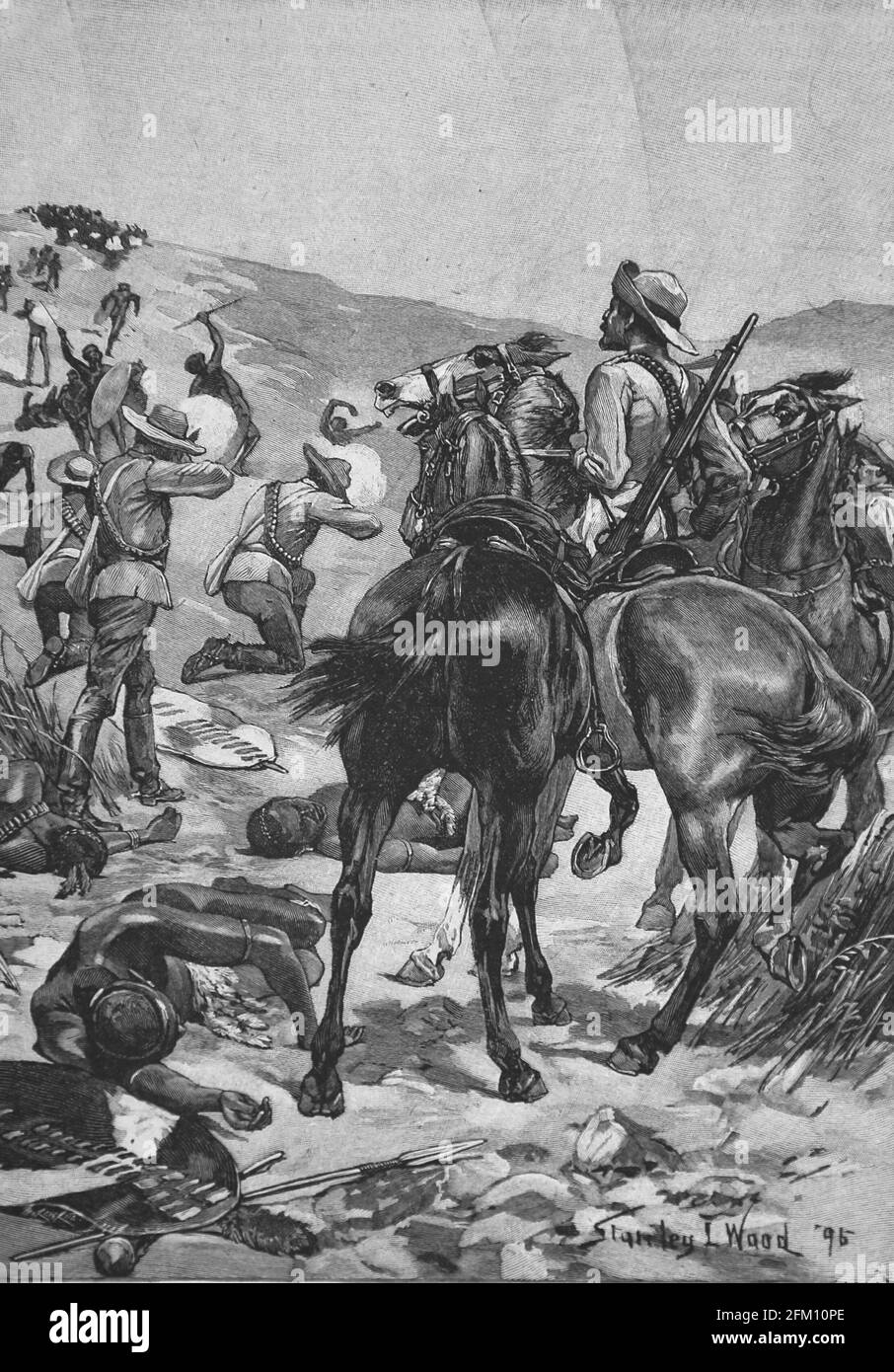 Anglo-Zulu War between the British Empire and the Zulu Kingdom, 1879. Combat. Iberian Illustration, 1898. Stock Photohttps://www.alamy.com/image-license-details/?v=1https://www.alamy.com/anglo-zulu-war-between-the-british-empire-and-the-zulu-kingdom-1879-combat-iberian-illustration-1898-image425364534.html
Anglo-Zulu War between the British Empire and the Zulu Kingdom, 1879. Combat. Iberian Illustration, 1898. Stock Photohttps://www.alamy.com/image-license-details/?v=1https://www.alamy.com/anglo-zulu-war-between-the-british-empire-and-the-zulu-kingdom-1879-combat-iberian-illustration-1898-image425364534.htmlRM2FM10PE–Anglo-Zulu War between the British Empire and the Zulu Kingdom, 1879. Combat. Iberian Illustration, 1898.
 geography / travel, Egypt, Giza, Sphinx, photograph by Felix Bonfils (1831 - 1885), Africa, 19th century, historic, historical, people, ancient world, Stock Photohttps://www.alamy.com/image-license-details/?v=1https://www.alamy.com/stock-photo-geography-travel-egypt-giza-sphinx-photograph-by-felix-bonfils-1831-23391993.html
geography / travel, Egypt, Giza, Sphinx, photograph by Felix Bonfils (1831 - 1885), Africa, 19th century, historic, historical, people, ancient world, Stock Photohttps://www.alamy.com/image-license-details/?v=1https://www.alamy.com/stock-photo-geography-travel-egypt-giza-sphinx-photograph-by-felix-bonfils-1831-23391993.htmlRMBA1GM9–geography / travel, Egypt, Giza, Sphinx, photograph by Felix Bonfils (1831 - 1885), Africa, 19th century, historic, historical, people, ancient world,
 State sword (eben and ada) made from Iron, steel, and ivory. Kingdom of Benin, Nigeria, West Africa. 19th century Stock Photohttps://www.alamy.com/image-license-details/?v=1https://www.alamy.com/state-sword-eben-and-ada-made-from-iron-steel-and-ivory-kingdom-of-benin-nigeria-west-africa-19th-century-image235037488.html
State sword (eben and ada) made from Iron, steel, and ivory. Kingdom of Benin, Nigeria, West Africa. 19th century Stock Photohttps://www.alamy.com/image-license-details/?v=1https://www.alamy.com/state-sword-eben-and-ada-made-from-iron-steel-and-ivory-kingdom-of-benin-nigeria-west-africa-19th-century-image235037488.htmlRMRJATM0–State sword (eben and ada) made from Iron, steel, and ivory. Kingdom of Benin, Nigeria, West Africa. 19th century
 Diamond mine, South Africa, 19th century.Artist: St de Dree Stock Photohttps://www.alamy.com/image-license-details/?v=1https://www.alamy.com/diamond-mine-south-africa-19th-centuryartist-st-de-dree-image262752146.html
Diamond mine, South Africa, 19th century.Artist: St de Dree Stock Photohttps://www.alamy.com/image-license-details/?v=1https://www.alamy.com/diamond-mine-south-africa-19th-centuryartist-st-de-dree-image262752146.htmlRMW7DB16–Diamond mine, South Africa, 19th century.Artist: St de Dree
 The Battle of Belmont' during the Second Boer War on 23 November 1899, where the British under Lord Methuen assaulted a Boer position on Belmont kopje. Stock Photohttps://www.alamy.com/image-license-details/?v=1https://www.alamy.com/the-battle-of-belmont-during-the-second-boer-war-on-23-november-1899-where-the-british-under-lord-methuen-assaulted-a-boer-position-on-belmont-kopje-image210408066.html
The Battle of Belmont' during the Second Boer War on 23 November 1899, where the British under Lord Methuen assaulted a Boer position on Belmont kopje. Stock Photohttps://www.alamy.com/image-license-details/?v=1https://www.alamy.com/the-battle-of-belmont-during-the-second-boer-war-on-23-november-1899-where-the-british-under-lord-methuen-assaulted-a-boer-position-on-belmont-kopje-image210408066.htmlRMP68WHP–The Battle of Belmont' during the Second Boer War on 23 November 1899, where the British under Lord Methuen assaulted a Boer position on Belmont kopje.
 19th century map depicting a conjectured location of the imaginary continent of Atlantis of the coast of North Africa. Stock Photohttps://www.alamy.com/image-license-details/?v=1https://www.alamy.com/stock-photo-19th-century-map-depicting-a-conjectured-location-of-the-imaginary-50010923.html
19th century map depicting a conjectured location of the imaginary continent of Atlantis of the coast of North Africa. Stock Photohttps://www.alamy.com/image-license-details/?v=1https://www.alamy.com/stock-photo-19th-century-map-depicting-a-conjectured-location-of-the-imaginary-50010923.htmlRMCWA5CB–19th century map depicting a conjectured location of the imaginary continent of Atlantis of the coast of North Africa.
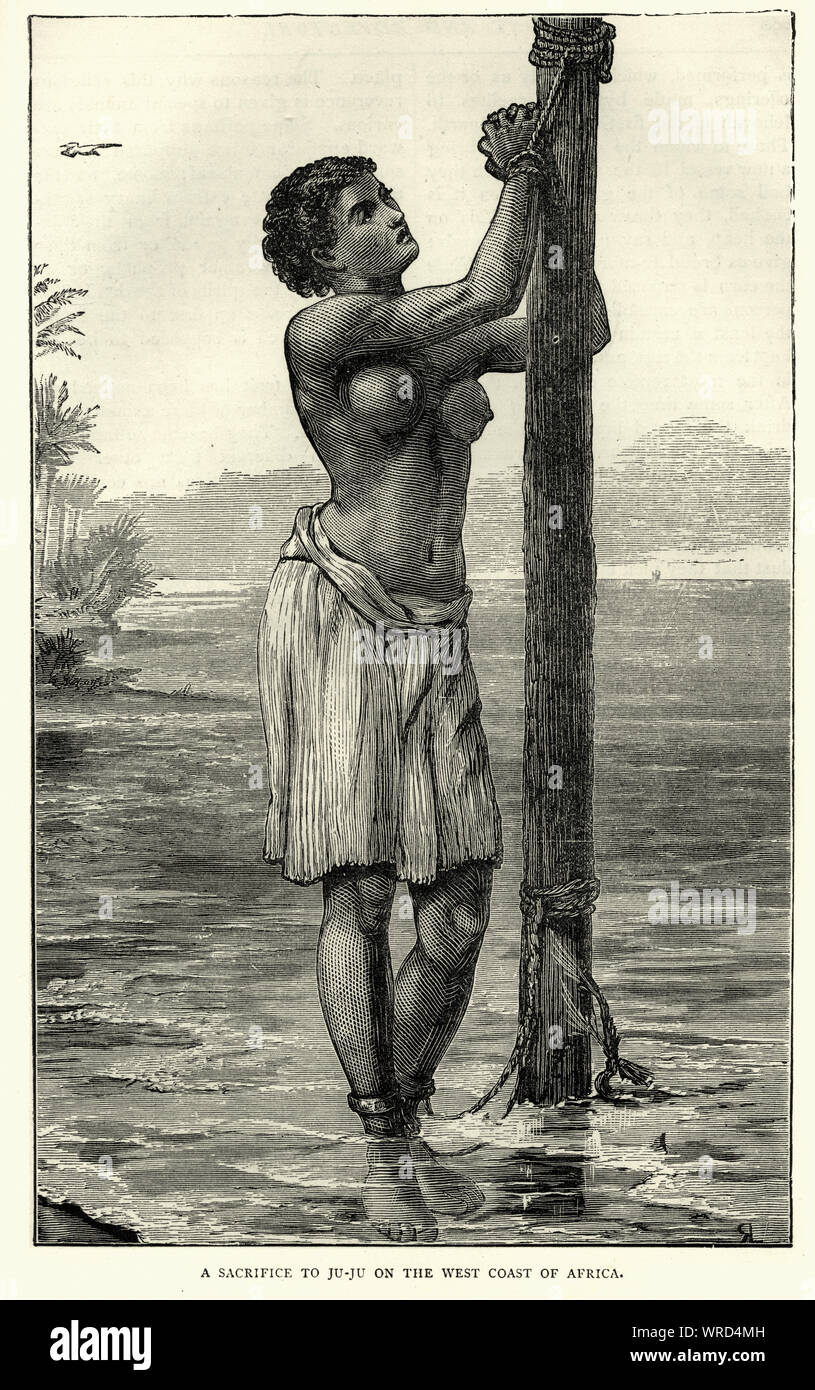 Vintage engraving of a Human sacrifice to Juju on the west coast of Africa, 19th Century. Young woman tied to a wooden post as the sea rises Stock Photohttps://www.alamy.com/image-license-details/?v=1https://www.alamy.com/vintage-engraving-of-a-human-sacrifice-to-juju-on-the-west-coast-of-africa-19th-century-young-woman-tied-to-a-wooden-post-as-the-sea-rises-image272581697.html
Vintage engraving of a Human sacrifice to Juju on the west coast of Africa, 19th Century. Young woman tied to a wooden post as the sea rises Stock Photohttps://www.alamy.com/image-license-details/?v=1https://www.alamy.com/vintage-engraving-of-a-human-sacrifice-to-juju-on-the-west-coast-of-africa-19th-century-young-woman-tied-to-a-wooden-post-as-the-sea-rises-image272581697.htmlRMWRD4MH–Vintage engraving of a Human sacrifice to Juju on the west coast of Africa, 19th Century. Young woman tied to a wooden post as the sea rises
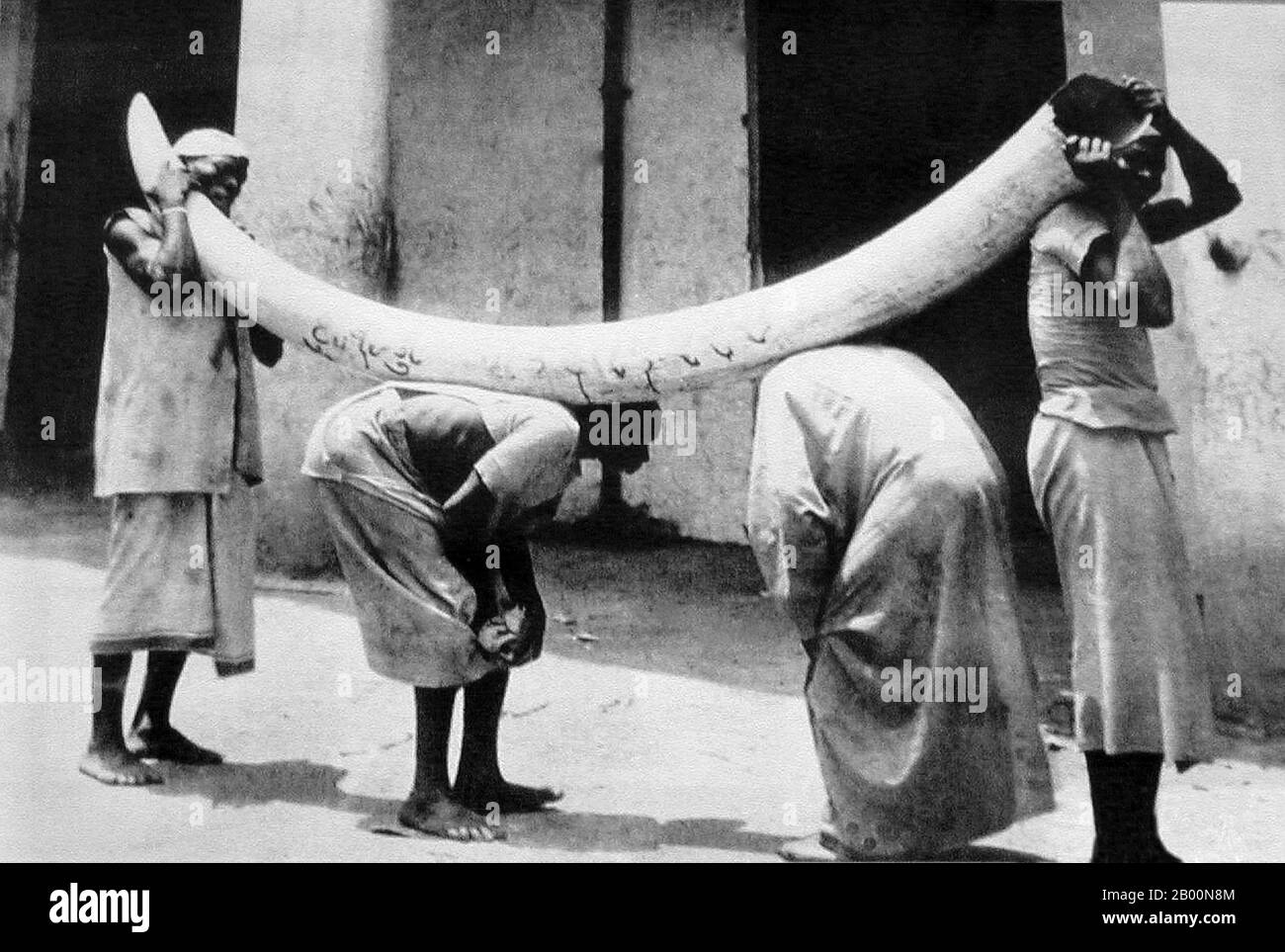 East Africa: Four African porters carrying a large elephant tusk, possibly in Zanzibar or Mombasa, 19th century. Ivory is a term for dentine, which constitutes the bulk of the teeth and tusks of animals such as elephants, when used as a material for art or manufacturing. Ivory is little used today, but has been important since ancient times for making a range of items, from ivory carvings to false teeth, fans, dominoes, piano keys and billiard balls. Elephant ivory has been the most important source, but ivory from species including the hippopotamus, walrus and narwhal can be used. Stock Photohttps://www.alamy.com/image-license-details/?v=1https://www.alamy.com/east-africa-four-african-porters-carrying-a-large-elephant-tusk-possibly-in-zanzibar-or-mombasa-19th-century-ivory-is-a-term-for-dentine-which-constitutes-the-bulk-of-the-teeth-and-tusks-of-animals-such-as-elephants-when-used-as-a-material-for-art-or-manufacturing-ivory-is-little-used-today-but-has-been-important-since-ancient-times-for-making-a-range-of-items-from-ivory-carvings-to-false-teeth-fans-dominoes-piano-keys-and-billiard-balls-elephant-ivory-has-been-the-most-important-source-but-ivory-from-species-including-the-hippopotamus-walrus-and-narwhal-can-be-used-image344224068.html
East Africa: Four African porters carrying a large elephant tusk, possibly in Zanzibar or Mombasa, 19th century. Ivory is a term for dentine, which constitutes the bulk of the teeth and tusks of animals such as elephants, when used as a material for art or manufacturing. Ivory is little used today, but has been important since ancient times for making a range of items, from ivory carvings to false teeth, fans, dominoes, piano keys and billiard balls. Elephant ivory has been the most important source, but ivory from species including the hippopotamus, walrus and narwhal can be used. Stock Photohttps://www.alamy.com/image-license-details/?v=1https://www.alamy.com/east-africa-four-african-porters-carrying-a-large-elephant-tusk-possibly-in-zanzibar-or-mombasa-19th-century-ivory-is-a-term-for-dentine-which-constitutes-the-bulk-of-the-teeth-and-tusks-of-animals-such-as-elephants-when-used-as-a-material-for-art-or-manufacturing-ivory-is-little-used-today-but-has-been-important-since-ancient-times-for-making-a-range-of-items-from-ivory-carvings-to-false-teeth-fans-dominoes-piano-keys-and-billiard-balls-elephant-ivory-has-been-the-most-important-source-but-ivory-from-species-including-the-hippopotamus-walrus-and-narwhal-can-be-used-image344224068.htmlRM2B00N8M–East Africa: Four African porters carrying a large elephant tusk, possibly in Zanzibar or Mombasa, 19th century. Ivory is a term for dentine, which constitutes the bulk of the teeth and tusks of animals such as elephants, when used as a material for art or manufacturing. Ivory is little used today, but has been important since ancient times for making a range of items, from ivory carvings to false teeth, fans, dominoes, piano keys and billiard balls. Elephant ivory has been the most important source, but ivory from species including the hippopotamus, walrus and narwhal can be used.
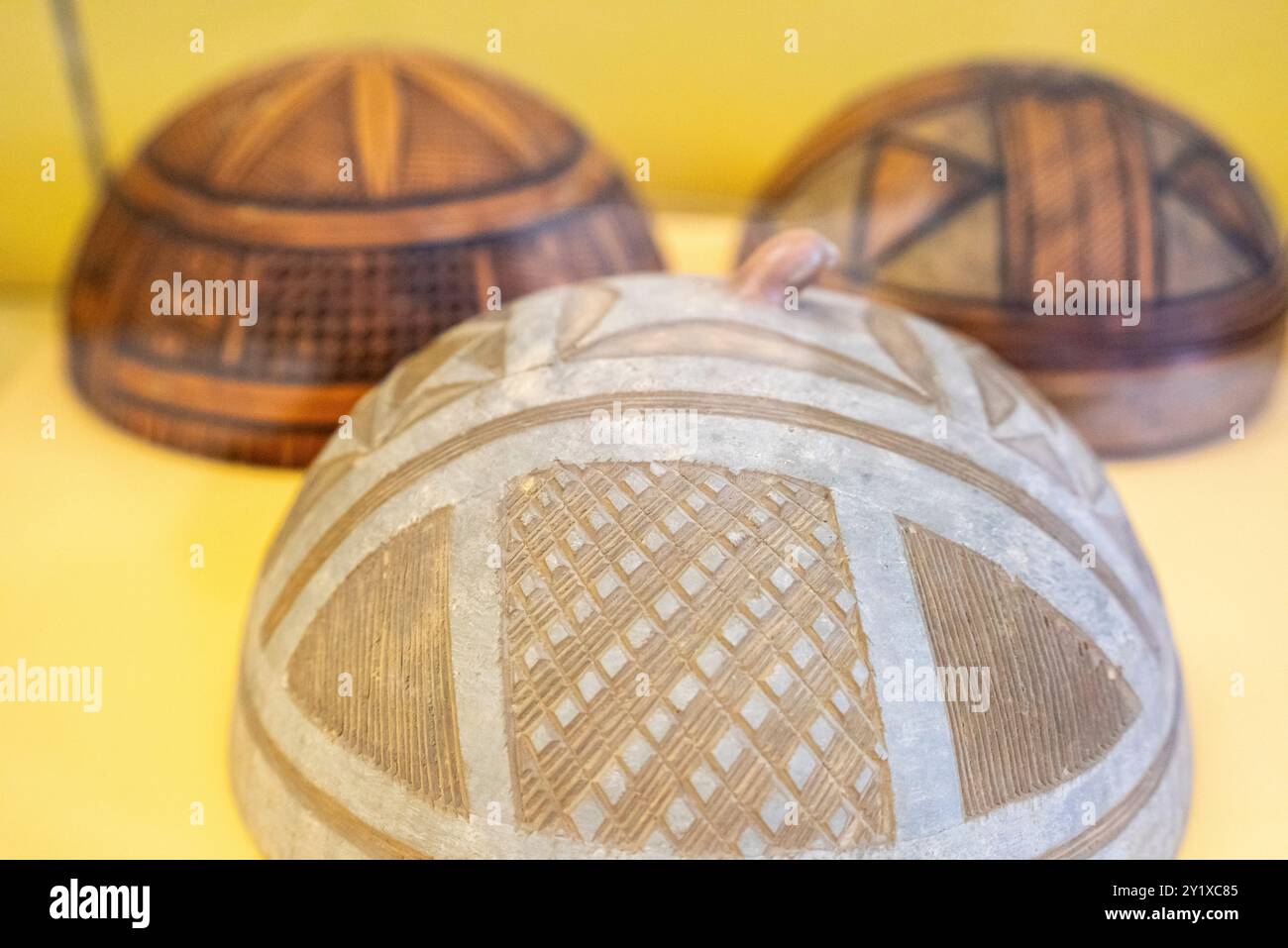 Traditional decorated bowls, West Africa, 19th century, pumpkin bark and pigment, Anthropology National Museum, Madrid, Spain. Stock Photohttps://www.alamy.com/image-license-details/?v=1https://www.alamy.com/traditional-decorated-bowls-west-africa-19th-century-pumpkin-bark-and-pigment-anthropology-national-museum-madrid-spain-image620768293.html
Traditional decorated bowls, West Africa, 19th century, pumpkin bark and pigment, Anthropology National Museum, Madrid, Spain. Stock Photohttps://www.alamy.com/image-license-details/?v=1https://www.alamy.com/traditional-decorated-bowls-west-africa-19th-century-pumpkin-bark-and-pigment-anthropology-national-museum-madrid-spain-image620768293.htmlRM2Y1XC85–Traditional decorated bowls, West Africa, 19th century, pumpkin bark and pigment, Anthropology National Museum, Madrid, Spain.
 . A moonlit street in North Africa . 19th century (Second half) 213 Girardet A moonlit street in North Africa Stock Photohttps://www.alamy.com/image-license-details/?v=1https://www.alamy.com/a-moonlit-street-in-north-africa-19th-century-second-half-213-girardet-a-moonlit-street-in-north-africa-image189028270.html
. A moonlit street in North Africa . 19th century (Second half) 213 Girardet A moonlit street in North Africa Stock Photohttps://www.alamy.com/image-license-details/?v=1https://www.alamy.com/a-moonlit-street-in-north-africa-19th-century-second-half-213-girardet-a-moonlit-street-in-north-africa-image189028270.htmlRMMYEYDJ–. A moonlit street in North Africa . 19th century (Second half) 213 Girardet A moonlit street in North Africa
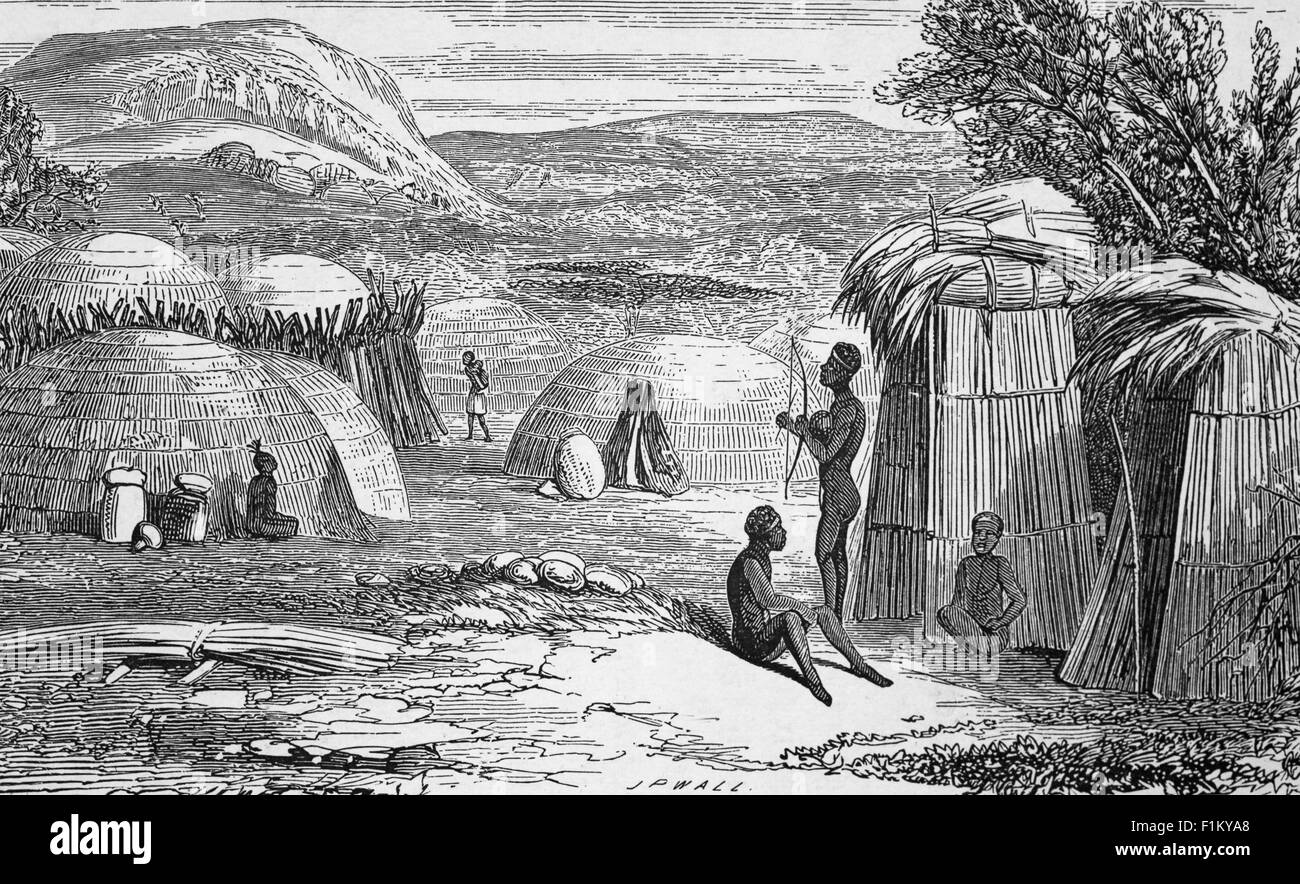 A 19th Century view of a native village or Kraal, South Africa Stock Photohttps://www.alamy.com/image-license-details/?v=1https://www.alamy.com/stock-photo-a-19th-century-view-of-a-native-village-or-kraal-south-africa-87105040.html
A 19th Century view of a native village or Kraal, South Africa Stock Photohttps://www.alamy.com/image-license-details/?v=1https://www.alamy.com/stock-photo-a-19th-century-view-of-a-native-village-or-kraal-south-africa-87105040.htmlRMF1KYA8–A 19th Century view of a native village or Kraal, South Africa
 Portrait of Guillaume Lejean, French geographer and explorer. Old XIX century engraved from Journey in Abyssinia Le Tour du Monde 1864 Stock Photohttps://www.alamy.com/image-license-details/?v=1https://www.alamy.com/portrait-of-guillaume-lejean-french-geographer-and-explorer-old-xix-century-engraved-from-journey-in-abyssinia-le-tour-du-monde-1864-image397949435.html
Portrait of Guillaume Lejean, French geographer and explorer. Old XIX century engraved from Journey in Abyssinia Le Tour du Monde 1864 Stock Photohttps://www.alamy.com/image-license-details/?v=1https://www.alamy.com/portrait-of-guillaume-lejean-french-geographer-and-explorer-old-xix-century-engraved-from-journey-in-abyssinia-le-tour-du-monde-1864-image397949435.htmlRM2E3C4FR–Portrait of Guillaume Lejean, French geographer and explorer. Old XIX century engraved from Journey in Abyssinia Le Tour du Monde 1864
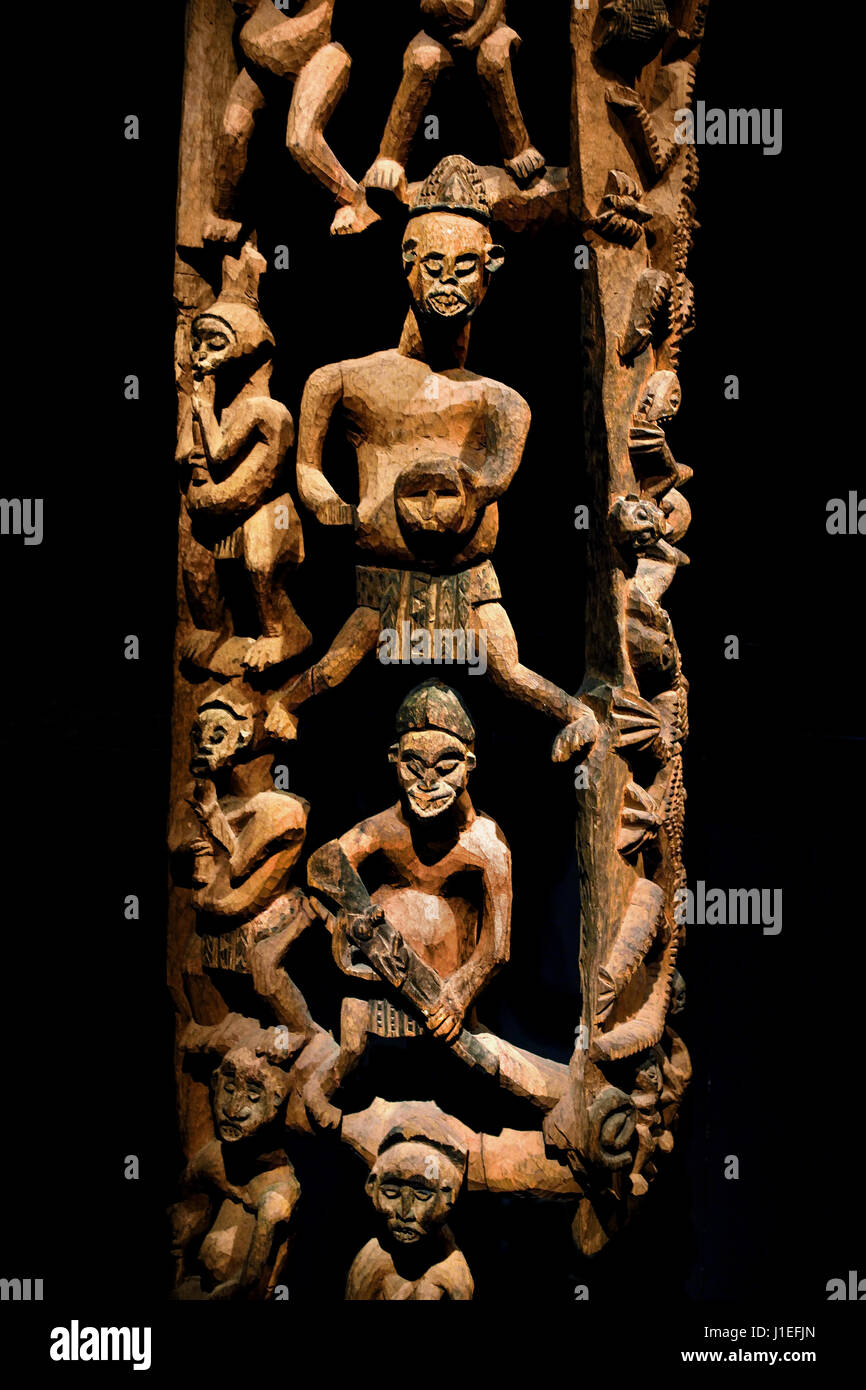 Door post 19th or early 20th century Cameroon (Country) Bati bei Bali (Location) Northwest Province Africa African Stock Photohttps://www.alamy.com/image-license-details/?v=1https://www.alamy.com/stock-photo-door-post-19th-or-early-20th-century-cameroon-country-bati-bei-bali-138617213.html
Door post 19th or early 20th century Cameroon (Country) Bati bei Bali (Location) Northwest Province Africa African Stock Photohttps://www.alamy.com/image-license-details/?v=1https://www.alamy.com/stock-photo-door-post-19th-or-early-20th-century-cameroon-country-bati-bei-bali-138617213.htmlRMJ1EFJN–Door post 19th or early 20th century Cameroon (Country) Bati bei Bali (Location) Northwest Province Africa African
 North Africa, Tlemcen, 19th Century Stock Photohttps://www.alamy.com/image-license-details/?v=1https://www.alamy.com/north-africa-tlemcen-19th-century-image352773722.html
North Africa, Tlemcen, 19th Century Stock Photohttps://www.alamy.com/image-license-details/?v=1https://www.alamy.com/north-africa-tlemcen-19th-century-image352773722.htmlRM2BDX6DE–North Africa, Tlemcen, 19th Century
 David Livingstone (1813–1873), Scottish physician, Congregationalist, pioneer Christian missionary with the London Missionary Society, explorer in Africa, and one of the most popular British heroes of the late 19th-century Victorian era. Photo c1870. Stock Photohttps://www.alamy.com/image-license-details/?v=1https://www.alamy.com/david-livingstone-18131873-scottish-physician-congregationalist-pioneer-christian-missionary-with-the-london-missionary-society-explorer-in-africa-and-one-of-the-most-popular-british-heroes-of-the-late-19th-century-victorian-era-photo-c1870-image404637615.html
David Livingstone (1813–1873), Scottish physician, Congregationalist, pioneer Christian missionary with the London Missionary Society, explorer in Africa, and one of the most popular British heroes of the late 19th-century Victorian era. Photo c1870. Stock Photohttps://www.alamy.com/image-license-details/?v=1https://www.alamy.com/david-livingstone-18131873-scottish-physician-congregationalist-pioneer-christian-missionary-with-the-london-missionary-society-explorer-in-africa-and-one-of-the-most-popular-british-heroes-of-the-late-19th-century-victorian-era-photo-c1870-image404637615.htmlRM2EE8RBB–David Livingstone (1813–1873), Scottish physician, Congregationalist, pioneer Christian missionary with the London Missionary Society, explorer in Africa, and one of the most popular British heroes of the late 19th-century Victorian era. Photo c1870.
 Hunting buffalo in Central Africa in the late 19th century. Stock Photohttps://www.alamy.com/image-license-details/?v=1https://www.alamy.com/stock-photo-hunting-buffalo-in-central-africa-in-the-late-19th-century-29722411.html
Hunting buffalo in Central Africa in the late 19th century. Stock Photohttps://www.alamy.com/image-license-details/?v=1https://www.alamy.com/stock-photo-hunting-buffalo-in-central-africa-in-the-late-19th-century-29722411.htmlRMBM9Y6K–Hunting buffalo in Central Africa in the late 19th century.
 History of Africa. 19th century. Construction of a road. Engraving. El Congo y la Creación del Estado Independiente de este nombre. Historia de los Trabajos y Exploraciones Verificados (The Congo and the Founding of its Free State. A Story of Work and Exploration), by Henry M. Stanley. Edited in Barcelona, ca.1890. Spain. Stock Photohttps://www.alamy.com/image-license-details/?v=1https://www.alamy.com/history-of-africa-19th-century-construction-of-a-road-engraving-el-congo-y-la-creacin-del-estado-independiente-de-este-nombre-historia-de-los-trabajos-y-exploraciones-verificados-the-congo-and-the-founding-of-its-free-state-a-story-of-work-and-exploration-by-henry-m-stanley-edited-in-barcelona-ca1890-spain-image425404907.html
History of Africa. 19th century. Construction of a road. Engraving. El Congo y la Creación del Estado Independiente de este nombre. Historia de los Trabajos y Exploraciones Verificados (The Congo and the Founding of its Free State. A Story of Work and Exploration), by Henry M. Stanley. Edited in Barcelona, ca.1890. Spain. Stock Photohttps://www.alamy.com/image-license-details/?v=1https://www.alamy.com/history-of-africa-19th-century-construction-of-a-road-engraving-el-congo-y-la-creacin-del-estado-independiente-de-este-nombre-historia-de-los-trabajos-y-exploraciones-verificados-the-congo-and-the-founding-of-its-free-state-a-story-of-work-and-exploration-by-henry-m-stanley-edited-in-barcelona-ca1890-spain-image425404907.htmlRM2FM2T8B–History of Africa. 19th century. Construction of a road. Engraving. El Congo y la Creación del Estado Independiente de este nombre. Historia de los Trabajos y Exploraciones Verificados (The Congo and the Founding of its Free State. A Story of Work and Exploration), by Henry M. Stanley. Edited in Barcelona, ca.1890. Spain.
 Arab-Swahili slave traders and their captives on the Ruvuma River in East Africa, 19th century Stock Photohttps://www.alamy.com/image-license-details/?v=1https://www.alamy.com/arab-swahili-slave-traders-and-their-captives-on-the-ruvuma-river-in-east-africa-19th-century-image503786513.html
Arab-Swahili slave traders and their captives on the Ruvuma River in East Africa, 19th century Stock Photohttps://www.alamy.com/image-license-details/?v=1https://www.alamy.com/arab-swahili-slave-traders-and-their-captives-on-the-ruvuma-river-in-east-africa-19th-century-image503786513.htmlRM2M7HCRD–Arab-Swahili slave traders and their captives on the Ruvuma River in East Africa, 19th century
 Lance point, Wrought steel, Small spatulate point above series of 77 projecting barbs, the whole above a tapering hollow socket., Central or East Africa, 19th century, metalwork, Decorative Arts, Lance point Stock Photohttps://www.alamy.com/image-license-details/?v=1https://www.alamy.com/lance-point-wrought-steel-small-spatulate-point-above-series-of-77-projecting-barbs-the-whole-above-a-tapering-hollow-socket-central-or-east-africa-19th-century-metalwork-decorative-arts-lance-point-image391443578.html
Lance point, Wrought steel, Small spatulate point above series of 77 projecting barbs, the whole above a tapering hollow socket., Central or East Africa, 19th century, metalwork, Decorative Arts, Lance point Stock Photohttps://www.alamy.com/image-license-details/?v=1https://www.alamy.com/lance-point-wrought-steel-small-spatulate-point-above-series-of-77-projecting-barbs-the-whole-above-a-tapering-hollow-socket-central-or-east-africa-19th-century-metalwork-decorative-arts-lance-point-image391443578.htmlRM2DMRP7P–Lance point, Wrought steel, Small spatulate point above series of 77 projecting barbs, the whole above a tapering hollow socket., Central or East Africa, 19th century, metalwork, Decorative Arts, Lance point
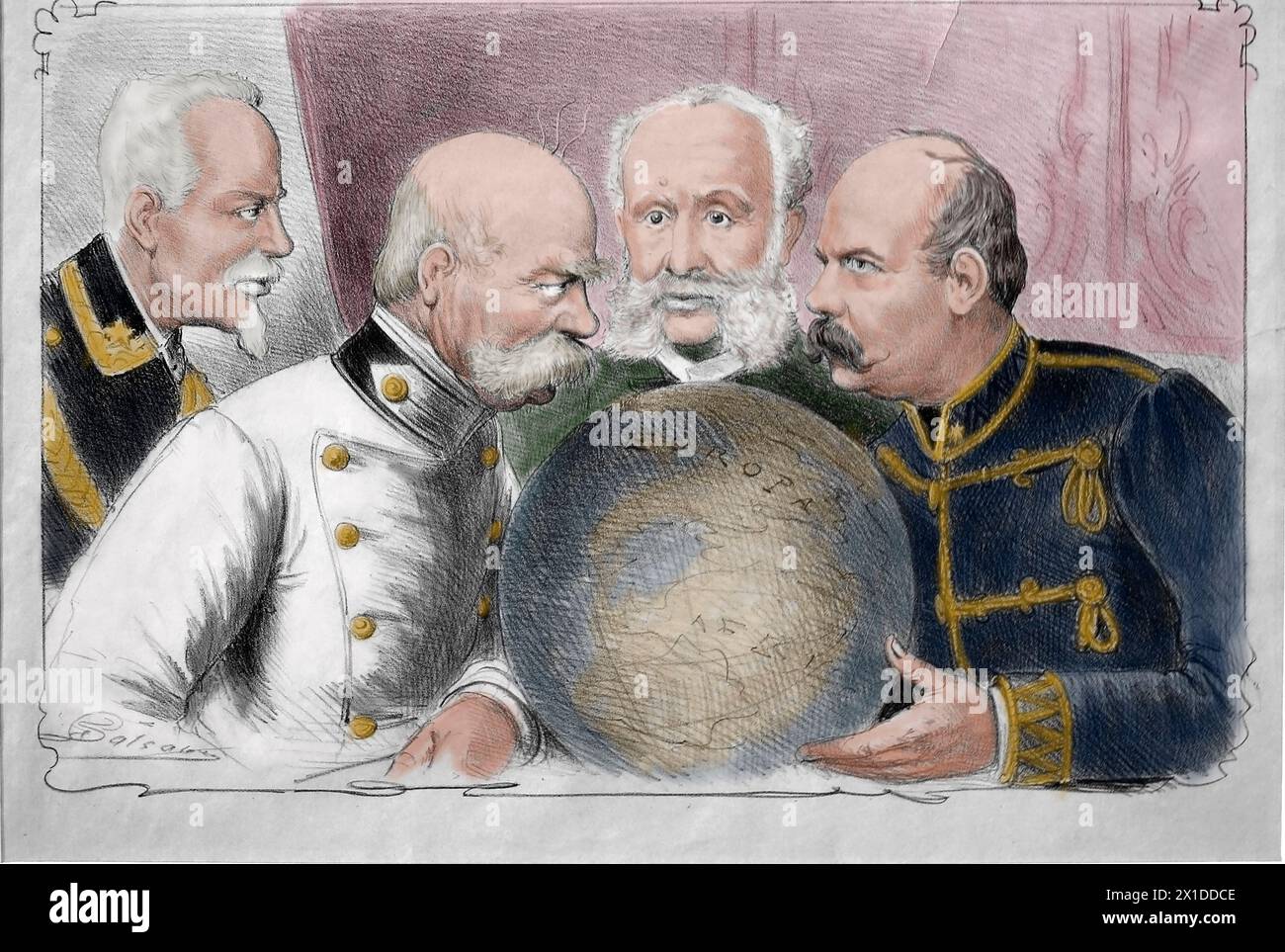 European colonialism. Scramble for Africa. Lithography by G. Ansal. 19th century. Stock Photohttps://www.alamy.com/image-license-details/?v=1https://www.alamy.com/european-colonialism-scramble-for-africa-lithography-by-g-ansal-19th-century-image603273454.html
European colonialism. Scramble for Africa. Lithography by G. Ansal. 19th century. Stock Photohttps://www.alamy.com/image-license-details/?v=1https://www.alamy.com/european-colonialism-scramble-for-africa-lithography-by-g-ansal-19th-century-image603273454.htmlRM2X1DDCE–European colonialism. Scramble for Africa. Lithography by G. Ansal. 19th century.
 A 19th century coloured engraving showing the variety of tribal and racial clothing in Ethiopia at that time.Ethiopia is still a multi-ethnic diverse state with 80+ different ethnic groups - የ19ኛው ክፍለ ዘመን ባለ ቀለም የተቀረጸ ሥዕል ኢትዮጵያ በዚያን ጊዜ የነበረውን ልዩ ልዩ የጎሣና የዘር ልብስ ያሳያል። - Stock Photohttps://www.alamy.com/image-license-details/?v=1https://www.alamy.com/a-19th-century-coloured-engraving-showing-the-variety-of-tribal-and-racial-clothing-in-ethiopia-at-that-timeethiopia-is-still-a-multi-ethnic-diverse-state-with-80-different-ethnic-groups-19-image623885111.html
A 19th century coloured engraving showing the variety of tribal and racial clothing in Ethiopia at that time.Ethiopia is still a multi-ethnic diverse state with 80+ different ethnic groups - የ19ኛው ክፍለ ዘመን ባለ ቀለም የተቀረጸ ሥዕል ኢትዮጵያ በዚያን ጊዜ የነበረውን ልዩ ልዩ የጎሣና የዘር ልብስ ያሳያል። - Stock Photohttps://www.alamy.com/image-license-details/?v=1https://www.alamy.com/a-19th-century-coloured-engraving-showing-the-variety-of-tribal-and-racial-clothing-in-ethiopia-at-that-timeethiopia-is-still-a-multi-ethnic-diverse-state-with-80-different-ethnic-groups-19-image623885111.htmlRM2Y70BR3–A 19th century coloured engraving showing the variety of tribal and racial clothing in Ethiopia at that time.Ethiopia is still a multi-ethnic diverse state with 80+ different ethnic groups - የ19ኛው ክፍለ ዘመን ባለ ቀለም የተቀረጸ ሥዕል ኢትዮጵያ በዚያን ጊዜ የነበረውን ልዩ ልዩ የጎሣና የዘር ልብስ ያሳያል። -
 Ceremonial sword, made from Iron, copper and Wood. Kuba-Bushoong Tribe, Democratic Republic of Congo, Africa. 19th century Stock Photohttps://www.alamy.com/image-license-details/?v=1https://www.alamy.com/ceremonial-sword-made-from-iron-copper-and-wood-kuba-bushoong-tribe-democratic-republic-of-congo-africa-19th-century-image235037490.html
Ceremonial sword, made from Iron, copper and Wood. Kuba-Bushoong Tribe, Democratic Republic of Congo, Africa. 19th century Stock Photohttps://www.alamy.com/image-license-details/?v=1https://www.alamy.com/ceremonial-sword-made-from-iron-copper-and-wood-kuba-bushoong-tribe-democratic-republic-of-congo-africa-19th-century-image235037490.htmlRMRJATM2–Ceremonial sword, made from Iron, copper and Wood. Kuba-Bushoong Tribe, Democratic Republic of Congo, Africa. 19th century
 Zulus, Natal, South Africa, 19th century. Artist: St de Dree Stock Photohttps://www.alamy.com/image-license-details/?v=1https://www.alamy.com/zulus-natal-south-africa-19th-century-artist-st-de-dree-image262752150.html
Zulus, Natal, South Africa, 19th century. Artist: St de Dree Stock Photohttps://www.alamy.com/image-license-details/?v=1https://www.alamy.com/zulus-natal-south-africa-19th-century-artist-st-de-dree-image262752150.htmlRMW7DB1A–Zulus, Natal, South Africa, 19th century. Artist: St de Dree
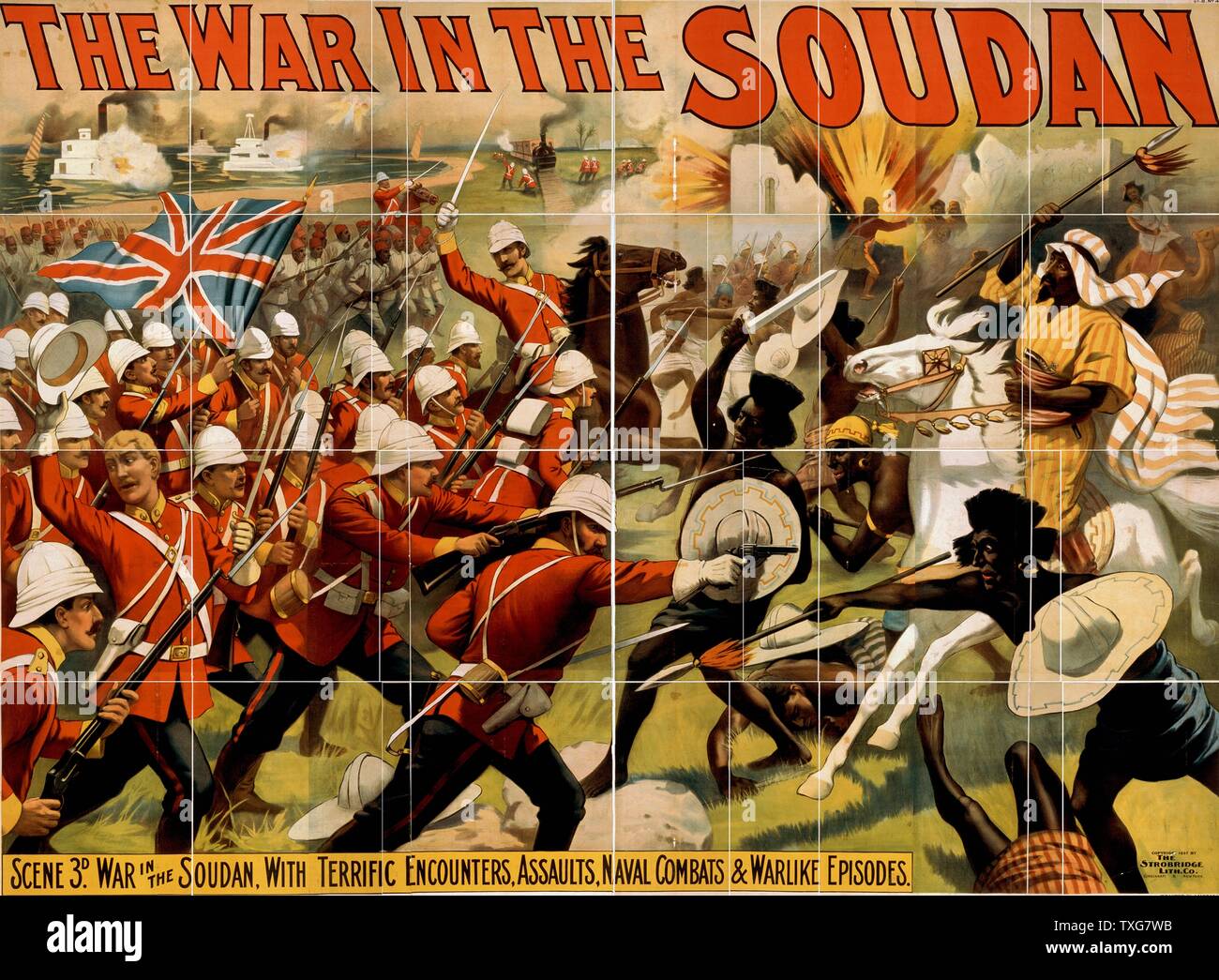 The War in the Soudan, poster for a Barnum and Bailey circus production 'The Mahdi, or, For the Victoria Cross', showing British and Mahdist troops fighting during the anglo-Sudan War or Mahdist War (1881-1899) Chromolithograph Stock Photohttps://www.alamy.com/image-license-details/?v=1https://www.alamy.com/the-war-in-the-soudan-poster-for-a-barnum-and-bailey-circus-production-the-mahdi-or-for-the-victoria-cross-showing-british-and-mahdist-troops-fighting-during-the-anglo-sudan-war-or-mahdist-war-1881-1899-chromolithograph-image257283639.html
The War in the Soudan, poster for a Barnum and Bailey circus production 'The Mahdi, or, For the Victoria Cross', showing British and Mahdist troops fighting during the anglo-Sudan War or Mahdist War (1881-1899) Chromolithograph Stock Photohttps://www.alamy.com/image-license-details/?v=1https://www.alamy.com/the-war-in-the-soudan-poster-for-a-barnum-and-bailey-circus-production-the-mahdi-or-for-the-victoria-cross-showing-british-and-mahdist-troops-fighting-during-the-anglo-sudan-war-or-mahdist-war-1881-1899-chromolithograph-image257283639.htmlRMTXG7WB–The War in the Soudan, poster for a Barnum and Bailey circus production 'The Mahdi, or, For the Victoria Cross', showing British and Mahdist troops fighting during the anglo-Sudan War or Mahdist War (1881-1899) Chromolithograph
 Map of the West Coast of Africa from Sierra Leone to Cape Palmas, including the colony of Liberia. In 1821, the American Stock Photohttps://www.alamy.com/image-license-details/?v=1https://www.alamy.com/stock-photo-map-of-the-west-coast-of-africa-from-sierra-leone-to-cape-palmas-including-50011903.html
Map of the West Coast of Africa from Sierra Leone to Cape Palmas, including the colony of Liberia. In 1821, the American Stock Photohttps://www.alamy.com/image-license-details/?v=1https://www.alamy.com/stock-photo-map-of-the-west-coast-of-africa-from-sierra-leone-to-cape-palmas-including-50011903.htmlRMCWA6KB–Map of the West Coast of Africa from Sierra Leone to Cape Palmas, including the colony of Liberia. In 1821, the American
 19th century Mandara Musicians of Northern and Central Africa. Stock Photohttps://www.alamy.com/image-license-details/?v=1https://www.alamy.com/19th-century-mandara-musicians-of-northern-and-central-africa-image268821410.html
19th century Mandara Musicians of Northern and Central Africa. Stock Photohttps://www.alamy.com/image-license-details/?v=1https://www.alamy.com/19th-century-mandara-musicians-of-northern-and-central-africa-image268821410.htmlRMWH9TCJ–19th century Mandara Musicians of Northern and Central Africa.
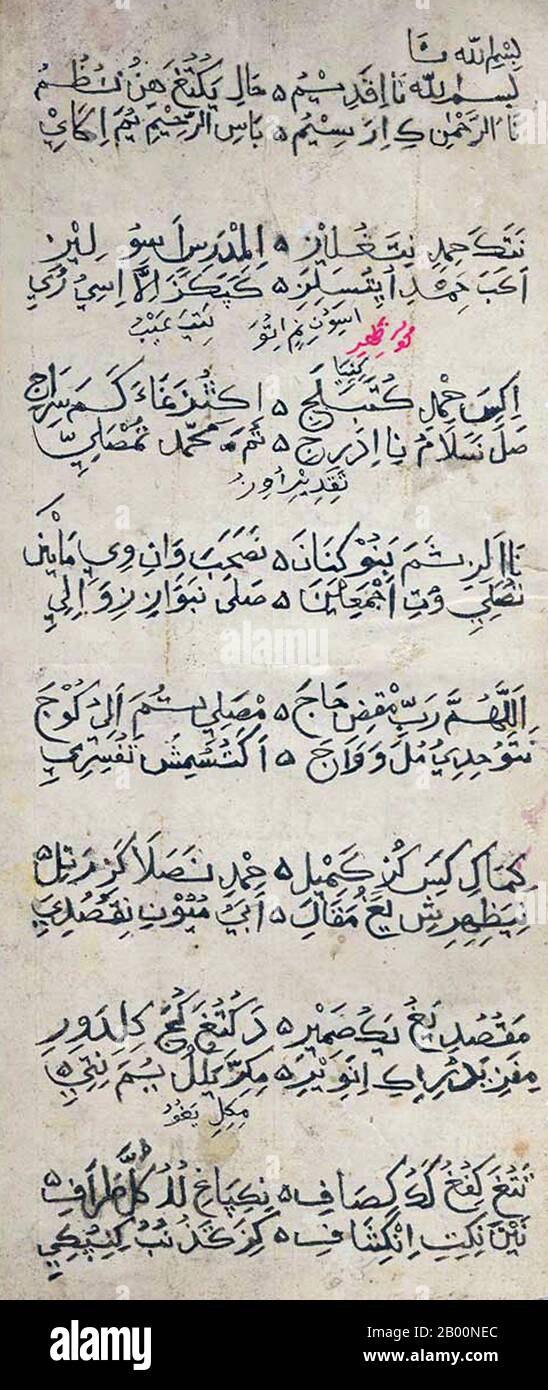 East Africa: Al Inkishafi, Swahili manuscript in Arabic script. Poem by Sayyid Abdalla bin Sayyid Ali bin Nasir (19th century. The Swahili language or Kiswahili is a Bantu language and the mother tongue of the Swahili people. It is spoken by various communities inhabiting the African Great Lakes region and other parts of Southeast Africa, including Tanzania, Kenya, Uganda, Rwanda, Burundi, Mozambique and the Democratic Republic of Congo. The closely related Comorian language, spoken in the Comoros Islands, is sometimes considered a Swahili dialect. Stock Photohttps://www.alamy.com/image-license-details/?v=1https://www.alamy.com/east-africa-al-inkishafi-swahili-manuscript-in-arabic-script-poem-by-sayyid-abdalla-bin-sayyid-ali-bin-nasir-19th-century-the-swahili-language-or-kiswahili-is-a-bantu-language-and-the-mother-tongue-of-the-swahili-people-it-is-spoken-by-various-communities-inhabiting-the-african-great-lakes-region-and-other-parts-of-southeast-africa-including-tanzania-kenya-uganda-rwanda-burundi-mozambique-and-the-democratic-republic-of-congo-the-closely-related-comorian-language-spoken-in-the-comoros-islands-is-sometimes-considered-a-swahili-dialect-image344224228.html
East Africa: Al Inkishafi, Swahili manuscript in Arabic script. Poem by Sayyid Abdalla bin Sayyid Ali bin Nasir (19th century. The Swahili language or Kiswahili is a Bantu language and the mother tongue of the Swahili people. It is spoken by various communities inhabiting the African Great Lakes region and other parts of Southeast Africa, including Tanzania, Kenya, Uganda, Rwanda, Burundi, Mozambique and the Democratic Republic of Congo. The closely related Comorian language, spoken in the Comoros Islands, is sometimes considered a Swahili dialect. Stock Photohttps://www.alamy.com/image-license-details/?v=1https://www.alamy.com/east-africa-al-inkishafi-swahili-manuscript-in-arabic-script-poem-by-sayyid-abdalla-bin-sayyid-ali-bin-nasir-19th-century-the-swahili-language-or-kiswahili-is-a-bantu-language-and-the-mother-tongue-of-the-swahili-people-it-is-spoken-by-various-communities-inhabiting-the-african-great-lakes-region-and-other-parts-of-southeast-africa-including-tanzania-kenya-uganda-rwanda-burundi-mozambique-and-the-democratic-republic-of-congo-the-closely-related-comorian-language-spoken-in-the-comoros-islands-is-sometimes-considered-a-swahili-dialect-image344224228.htmlRM2B00NEC–East Africa: Al Inkishafi, Swahili manuscript in Arabic script. Poem by Sayyid Abdalla bin Sayyid Ali bin Nasir (19th century. The Swahili language or Kiswahili is a Bantu language and the mother tongue of the Swahili people. It is spoken by various communities inhabiting the African Great Lakes region and other parts of Southeast Africa, including Tanzania, Kenya, Uganda, Rwanda, Burundi, Mozambique and the Democratic Republic of Congo. The closely related Comorian language, spoken in the Comoros Islands, is sometimes considered a Swahili dialect.
 Zulu culture basket, South Africa, 19th century, pigment and plant fiber, Anthropology National Museum, Madrid, Spain. Stock Photohttps://www.alamy.com/image-license-details/?v=1https://www.alamy.com/zulu-culture-basket-south-africa-19th-century-pigment-and-plant-fiber-anthropology-national-museum-madrid-spain-image620768299.html
Zulu culture basket, South Africa, 19th century, pigment and plant fiber, Anthropology National Museum, Madrid, Spain. Stock Photohttps://www.alamy.com/image-license-details/?v=1https://www.alamy.com/zulu-culture-basket-south-africa-19th-century-pigment-and-plant-fiber-anthropology-national-museum-madrid-spain-image620768299.htmlRM2Y1XC8B–Zulu culture basket, South Africa, 19th century, pigment and plant fiber, Anthropology National Museum, Madrid, Spain.
 . A moonlit street in North Africa . 19th century (Second half) 245 Girardet A moonlit street in North Africa Stock Photohttps://www.alamy.com/image-license-details/?v=1https://www.alamy.com/a-moonlit-street-in-north-africa-19th-century-second-half-245-girardet-a-moonlit-street-in-north-africa-image187744413.html
. A moonlit street in North Africa . 19th century (Second half) 245 Girardet A moonlit street in North Africa Stock Photohttps://www.alamy.com/image-license-details/?v=1https://www.alamy.com/a-moonlit-street-in-north-africa-19th-century-second-half-245-girardet-a-moonlit-street-in-north-africa-image187744413.htmlRMMWCDWH–. A moonlit street in North Africa . 19th century (Second half) 245 Girardet A moonlit street in North Africa
 19th Century illustration of diamond mining in South Africa. The 1867 discovery of diamonds in the Cape Colony radically modified the world’s supply of diamonds. The annual world diamond production increased more than tenfold in the following 10 years, a once extremely rare material became accessible to Western society with its growing wealth. In the 1870′s and 1880′s, South Africa produced 95% of the world’s diamonds, was home to great wealth. Stock Photohttps://www.alamy.com/image-license-details/?v=1https://www.alamy.com/stock-photo-19th-century-illustration-of-diamond-mining-in-south-africa-the-1867-87105041.html
19th Century illustration of diamond mining in South Africa. The 1867 discovery of diamonds in the Cape Colony radically modified the world’s supply of diamonds. The annual world diamond production increased more than tenfold in the following 10 years, a once extremely rare material became accessible to Western society with its growing wealth. In the 1870′s and 1880′s, South Africa produced 95% of the world’s diamonds, was home to great wealth. Stock Photohttps://www.alamy.com/image-license-details/?v=1https://www.alamy.com/stock-photo-19th-century-illustration-of-diamond-mining-in-south-africa-the-1867-87105041.htmlRMF1KYA9–19th Century illustration of diamond mining in South Africa. The 1867 discovery of diamonds in the Cape Colony radically modified the world’s supply of diamonds. The annual world diamond production increased more than tenfold in the following 10 years, a once extremely rare material became accessible to Western society with its growing wealth. In the 1870′s and 1880′s, South Africa produced 95% of the world’s diamonds, was home to great wealth.
 Travel miseries, Chad. Central Africa. Drawing by Ivan Pranishnikoff (1841 - 1909) Journey from Borno to Baguirmi 1872 by Dr. Gustav Hermann Nachtigal (1834 - 1885) Le Tour du Monde 1880 Stock Photohttps://www.alamy.com/image-license-details/?v=1https://www.alamy.com/travel-miseries-chad-central-africa-drawing-by-ivan-pranishnikoff-1841-1909-journey-from-borno-to-baguirmi-1872-by-dr-gustav-hermann-nachtigal-1834-1885-le-tour-du-monde-1880-image600723478.html
Travel miseries, Chad. Central Africa. Drawing by Ivan Pranishnikoff (1841 - 1909) Journey from Borno to Baguirmi 1872 by Dr. Gustav Hermann Nachtigal (1834 - 1885) Le Tour du Monde 1880 Stock Photohttps://www.alamy.com/image-license-details/?v=1https://www.alamy.com/travel-miseries-chad-central-africa-drawing-by-ivan-pranishnikoff-1841-1909-journey-from-borno-to-baguirmi-1872-by-dr-gustav-hermann-nachtigal-1834-1885-le-tour-du-monde-1880-image600723478.htmlRM2WW98WX–Travel miseries, Chad. Central Africa. Drawing by Ivan Pranishnikoff (1841 - 1909) Journey from Borno to Baguirmi 1872 by Dr. Gustav Hermann Nachtigal (1834 - 1885) Le Tour du Monde 1880
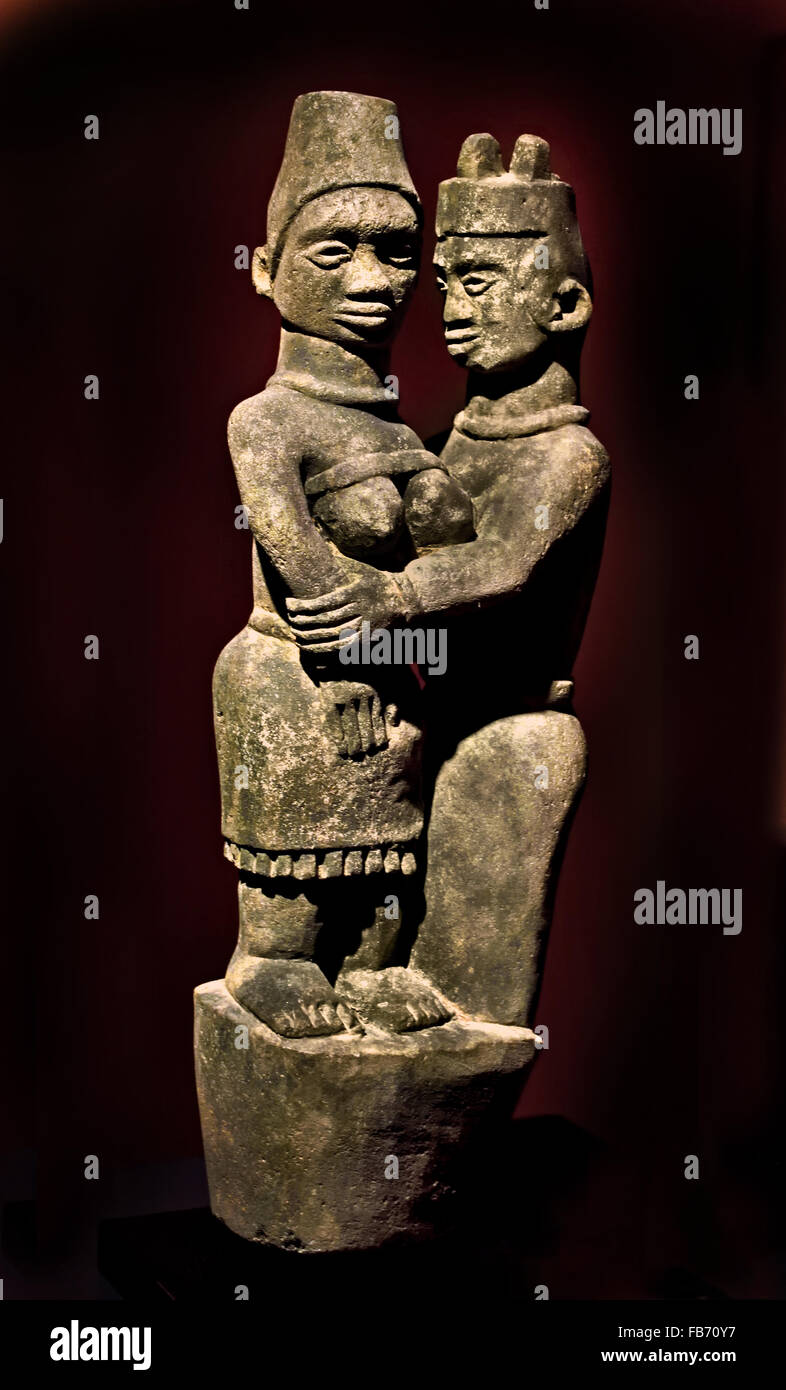 Tomb couple Ntadi 19th Century Stone Democratic Republic of Congo Africa African Stock Photohttps://www.alamy.com/image-license-details/?v=1https://www.alamy.com/stock-photo-tomb-couple-ntadi-19th-century-stone-democratic-republic-of-congo-92967483.html
Tomb couple Ntadi 19th Century Stone Democratic Republic of Congo Africa African Stock Photohttps://www.alamy.com/image-license-details/?v=1https://www.alamy.com/stock-photo-tomb-couple-ntadi-19th-century-stone-democratic-republic-of-congo-92967483.htmlRMFB70Y7–Tomb couple Ntadi 19th Century Stone Democratic Republic of Congo Africa African
 North Africa, Tangier, 19th Century Stock Photohttps://www.alamy.com/image-license-details/?v=1https://www.alamy.com/north-africa-tangier-19th-century-image352774381.html
North Africa, Tangier, 19th Century Stock Photohttps://www.alamy.com/image-license-details/?v=1https://www.alamy.com/north-africa-tangier-19th-century-image352774381.htmlRM2BDX791–North Africa, Tangier, 19th Century
 David Livingstone (1813–1873), Scottish physician, Congregationalist, pioneer Christian missionary with the London Missionary Society, explorer in Africa, and one of the most popular British heroes of the late 19th-century Victorian era. Photo c1870. Stock Photohttps://www.alamy.com/image-license-details/?v=1https://www.alamy.com/david-livingstone-18131873-scottish-physician-congregationalist-pioneer-christian-missionary-with-the-london-missionary-society-explorer-in-africa-and-one-of-the-most-popular-british-heroes-of-the-late-19th-century-victorian-era-photo-c1870-image404637641.html
David Livingstone (1813–1873), Scottish physician, Congregationalist, pioneer Christian missionary with the London Missionary Society, explorer in Africa, and one of the most popular British heroes of the late 19th-century Victorian era. Photo c1870. Stock Photohttps://www.alamy.com/image-license-details/?v=1https://www.alamy.com/david-livingstone-18131873-scottish-physician-congregationalist-pioneer-christian-missionary-with-the-london-missionary-society-explorer-in-africa-and-one-of-the-most-popular-british-heroes-of-the-late-19th-century-victorian-era-photo-c1870-image404637641.htmlRM2EE8RC9–David Livingstone (1813–1873), Scottish physician, Congregationalist, pioneer Christian missionary with the London Missionary Society, explorer in Africa, and one of the most popular British heroes of the late 19th-century Victorian era. Photo c1870.
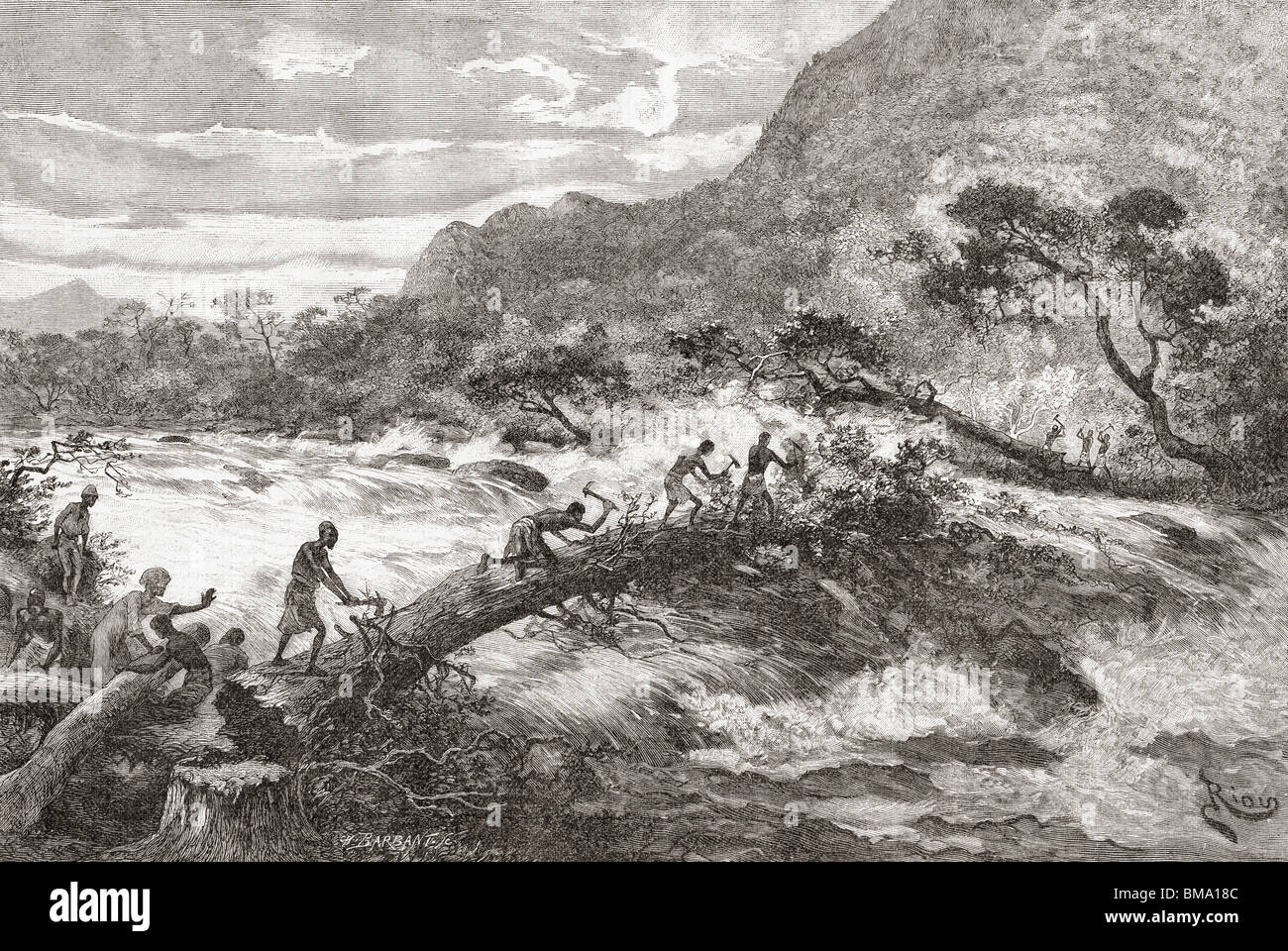 An improvised bridge in Central Africa in the 19th century. Stock Photohttps://www.alamy.com/image-license-details/?v=1https://www.alamy.com/stock-photo-an-improvised-bridge-in-central-africa-in-the-19th-century-29724028.html
An improvised bridge in Central Africa in the 19th century. Stock Photohttps://www.alamy.com/image-license-details/?v=1https://www.alamy.com/stock-photo-an-improvised-bridge-in-central-africa-in-the-19th-century-29724028.htmlRMBMA18C–An improvised bridge in Central Africa in the 19th century.
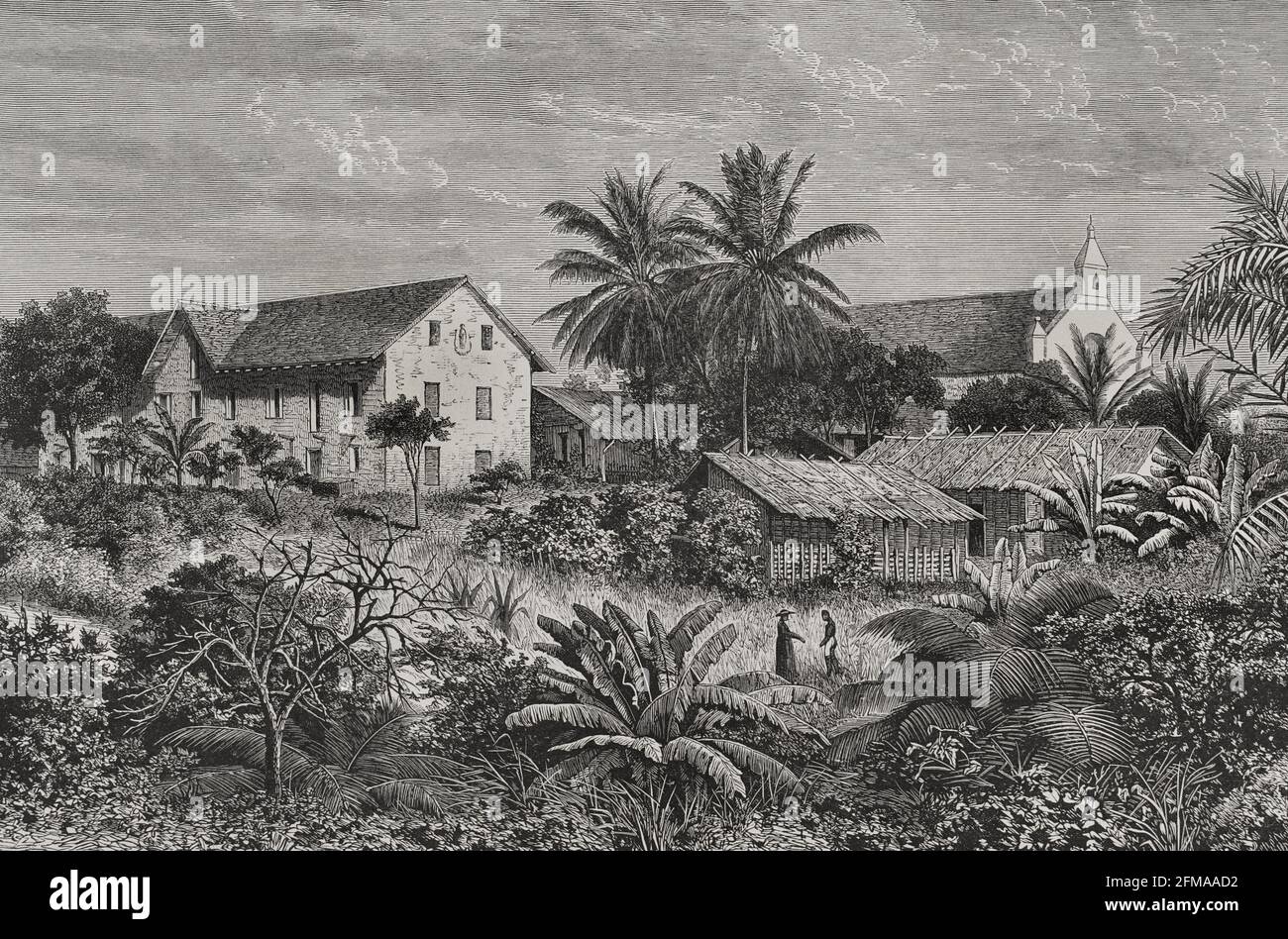 History of Africa. 19th century. Catholic Mission in Gabon. Engraving. El Congo y la Creación del Estado Independiente de este nombre. Historia de los Trabajos y Exploraciones Verificados (The Congo and the Founding of its Free State. A Story of Work and Exploration), by Henry M. Stanley. Edited in Barcelona, ca.1890. Spain. Stock Photohttps://www.alamy.com/image-license-details/?v=1https://www.alamy.com/history-of-africa-19th-century-catholic-mission-in-gabon-engraving-el-congo-y-la-creacin-del-estado-independiente-de-este-nombre-historia-de-los-trabajos-y-exploraciones-verificados-the-congo-and-the-founding-of-its-free-state-a-story-of-work-and-exploration-by-henry-m-stanley-edited-in-barcelona-ca1890-spain-image425569678.html
History of Africa. 19th century. Catholic Mission in Gabon. Engraving. El Congo y la Creación del Estado Independiente de este nombre. Historia de los Trabajos y Exploraciones Verificados (The Congo and the Founding of its Free State. A Story of Work and Exploration), by Henry M. Stanley. Edited in Barcelona, ca.1890. Spain. Stock Photohttps://www.alamy.com/image-license-details/?v=1https://www.alamy.com/history-of-africa-19th-century-catholic-mission-in-gabon-engraving-el-congo-y-la-creacin-del-estado-independiente-de-este-nombre-historia-de-los-trabajos-y-exploraciones-verificados-the-congo-and-the-founding-of-its-free-state-a-story-of-work-and-exploration-by-henry-m-stanley-edited-in-barcelona-ca1890-spain-image425569678.htmlRM2FMAAD2–History of Africa. 19th century. Catholic Mission in Gabon. Engraving. El Congo y la Creación del Estado Independiente de este nombre. Historia de los Trabajos y Exploraciones Verificados (The Congo and the Founding of its Free State. A Story of Work and Exploration), by Henry M. Stanley. Edited in Barcelona, ca.1890. Spain.
 Vintage photograph of Natives and kraal. Africans in front of a traditional kraal hut. South Africa, between 1800 and 1899. Kraal (also spelled craal or kraul) is an Afrikaans and Dutch word, also used in South African English, for an enclosure for cattle or other livestock, located within a Southern African settlement or village surrounded by a fence of thorn-bush branches, a palisade, mud wall, or other fencing, roughly circular in form. It is similar to a boma in eastern or central Africa. Stock Photohttps://www.alamy.com/image-license-details/?v=1https://www.alamy.com/vintage-photograph-of-natives-and-kraal-africans-in-front-of-a-traditional-kraal-hut-south-africa-between-1800-and-1899-kraal-also-spelled-craal-or-kraul-is-an-afrikaans-and-dutch-word-also-used-in-south-african-english-for-an-enclosure-for-cattle-or-other-livestock-located-within-a-southern-african-settlement-or-village-surrounded-by-a-fence-of-thorn-bush-branches-a-palisade-mud-wall-or-other-fencing-roughly-circular-in-form-it-is-similar-to-a-boma-in-eastern-or-central-africa-image624387299.html
Vintage photograph of Natives and kraal. Africans in front of a traditional kraal hut. South Africa, between 1800 and 1899. Kraal (also spelled craal or kraul) is an Afrikaans and Dutch word, also used in South African English, for an enclosure for cattle or other livestock, located within a Southern African settlement or village surrounded by a fence of thorn-bush branches, a palisade, mud wall, or other fencing, roughly circular in form. It is similar to a boma in eastern or central Africa. Stock Photohttps://www.alamy.com/image-license-details/?v=1https://www.alamy.com/vintage-photograph-of-natives-and-kraal-africans-in-front-of-a-traditional-kraal-hut-south-africa-between-1800-and-1899-kraal-also-spelled-craal-or-kraul-is-an-afrikaans-and-dutch-word-also-used-in-south-african-english-for-an-enclosure-for-cattle-or-other-livestock-located-within-a-southern-african-settlement-or-village-surrounded-by-a-fence-of-thorn-bush-branches-a-palisade-mud-wall-or-other-fencing-roughly-circular-in-form-it-is-similar-to-a-boma-in-eastern-or-central-africa-image624387299.htmlRM2Y7R8AB–Vintage photograph of Natives and kraal. Africans in front of a traditional kraal hut. South Africa, between 1800 and 1899. Kraal (also spelled craal or kraul) is an Afrikaans and Dutch word, also used in South African English, for an enclosure for cattle or other livestock, located within a Southern African settlement or village surrounded by a fence of thorn-bush branches, a palisade, mud wall, or other fencing, roughly circular in form. It is similar to a boma in eastern or central Africa.
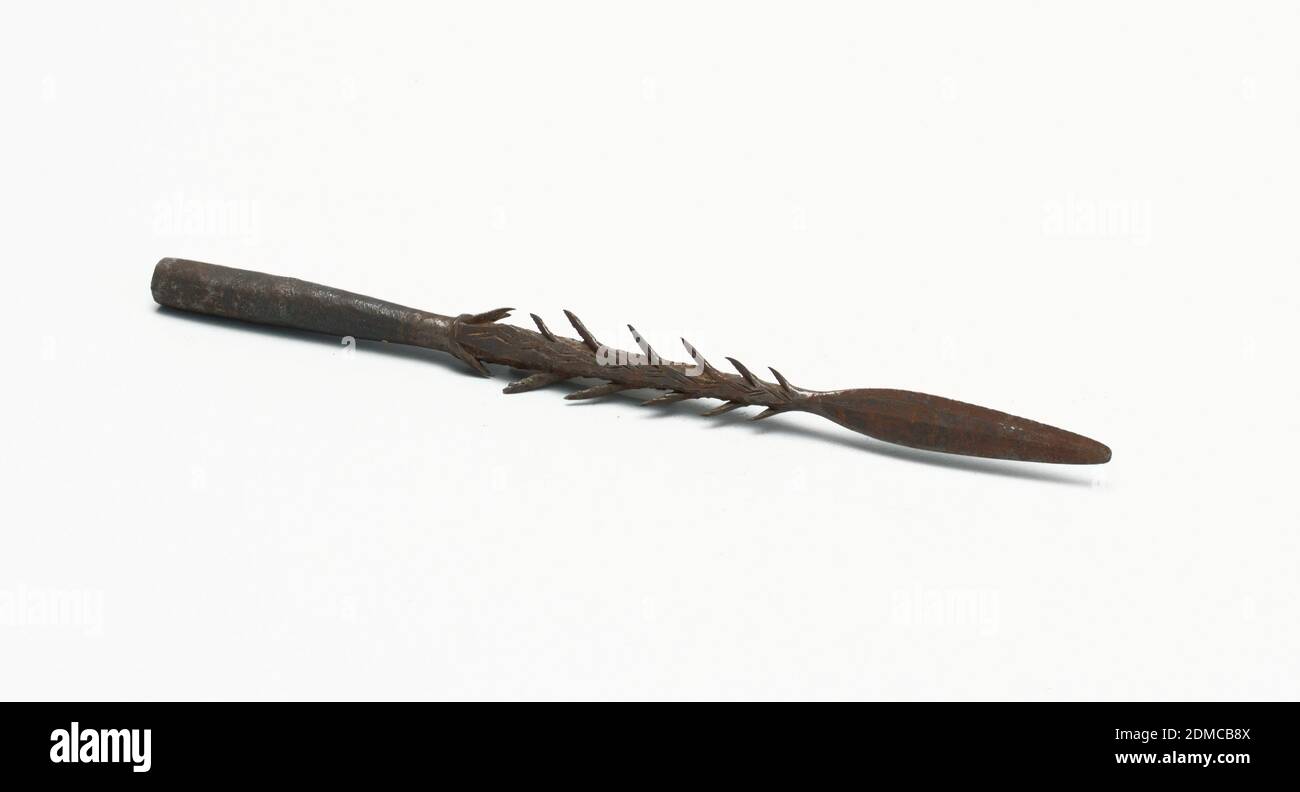 Spearhead, steel, Long spatulate point above series of 16 projecting barbs, the whole terminating in hollow flued socket., Central or East Africa, 19th century, appliances & tools, Decorative Arts, spearhead, spearhead Stock Photohttps://www.alamy.com/image-license-details/?v=1https://www.alamy.com/spearhead-steel-long-spatulate-point-above-series-of-16-projecting-barbs-the-whole-terminating-in-hollow-flued-socket-central-or-east-africa-19th-century-appliances-tools-decorative-arts-spearhead-spearhead-image391193514.html
Spearhead, steel, Long spatulate point above series of 16 projecting barbs, the whole terminating in hollow flued socket., Central or East Africa, 19th century, appliances & tools, Decorative Arts, spearhead, spearhead Stock Photohttps://www.alamy.com/image-license-details/?v=1https://www.alamy.com/spearhead-steel-long-spatulate-point-above-series-of-16-projecting-barbs-the-whole-terminating-in-hollow-flued-socket-central-or-east-africa-19th-century-appliances-tools-decorative-arts-spearhead-spearhead-image391193514.htmlRM2DMCB8X–Spearhead, steel, Long spatulate point above series of 16 projecting barbs, the whole terminating in hollow flued socket., Central or East Africa, 19th century, appliances & tools, Decorative Arts, spearhead, spearhead
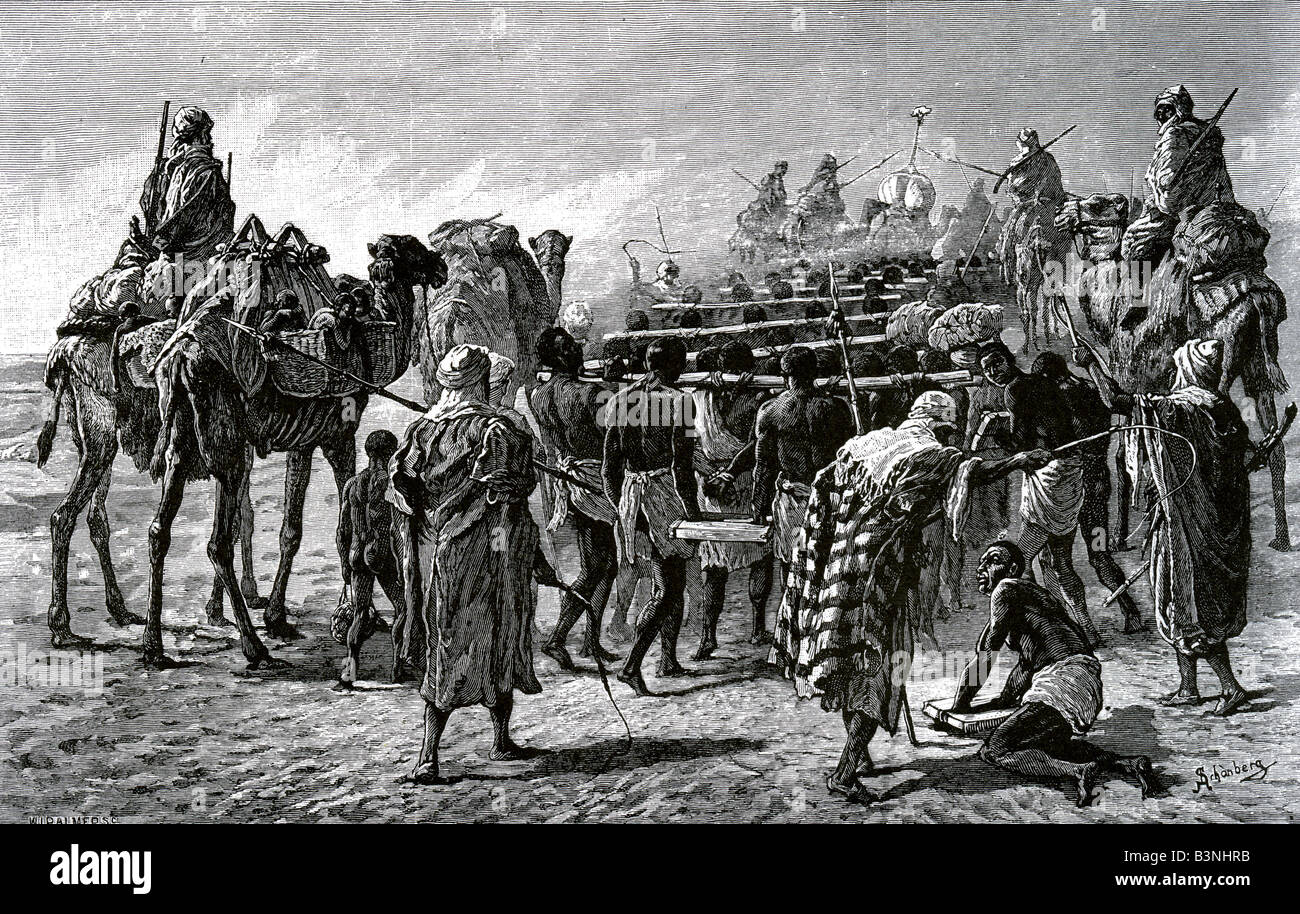 SLAVERY Arab slave caravan heading for the west coast of Africa from a 19th century French engraving Stock Photohttps://www.alamy.com/image-license-details/?v=1https://www.alamy.com/stock-photo-slavery-arab-slave-caravan-heading-for-the-west-coast-of-africa-from-19529311.html
SLAVERY Arab slave caravan heading for the west coast of Africa from a 19th century French engraving Stock Photohttps://www.alamy.com/image-license-details/?v=1https://www.alamy.com/stock-photo-slavery-arab-slave-caravan-heading-for-the-west-coast-of-africa-from-19529311.htmlRMB3NHRB–SLAVERY Arab slave caravan heading for the west coast of Africa from a 19th century French engraving